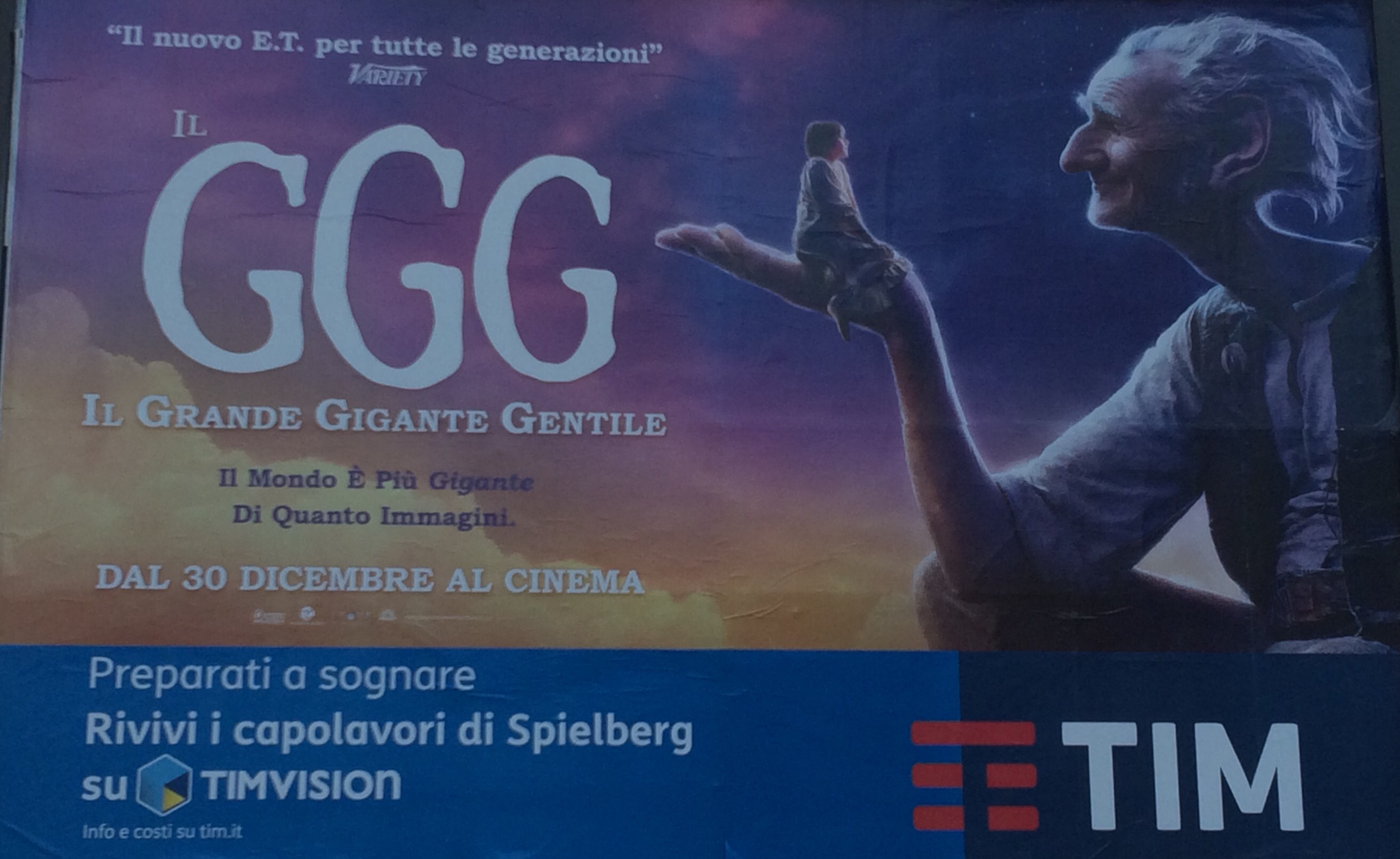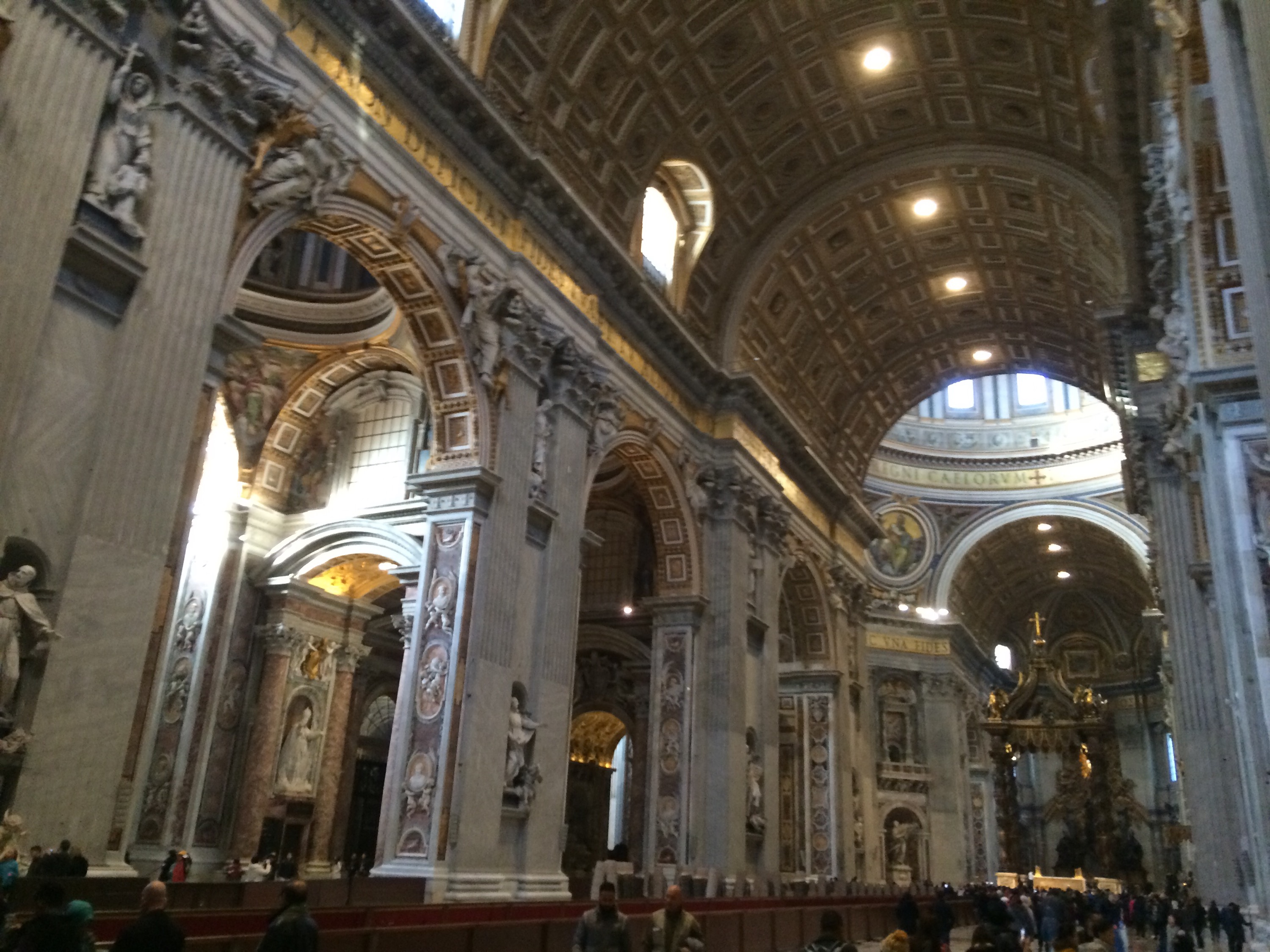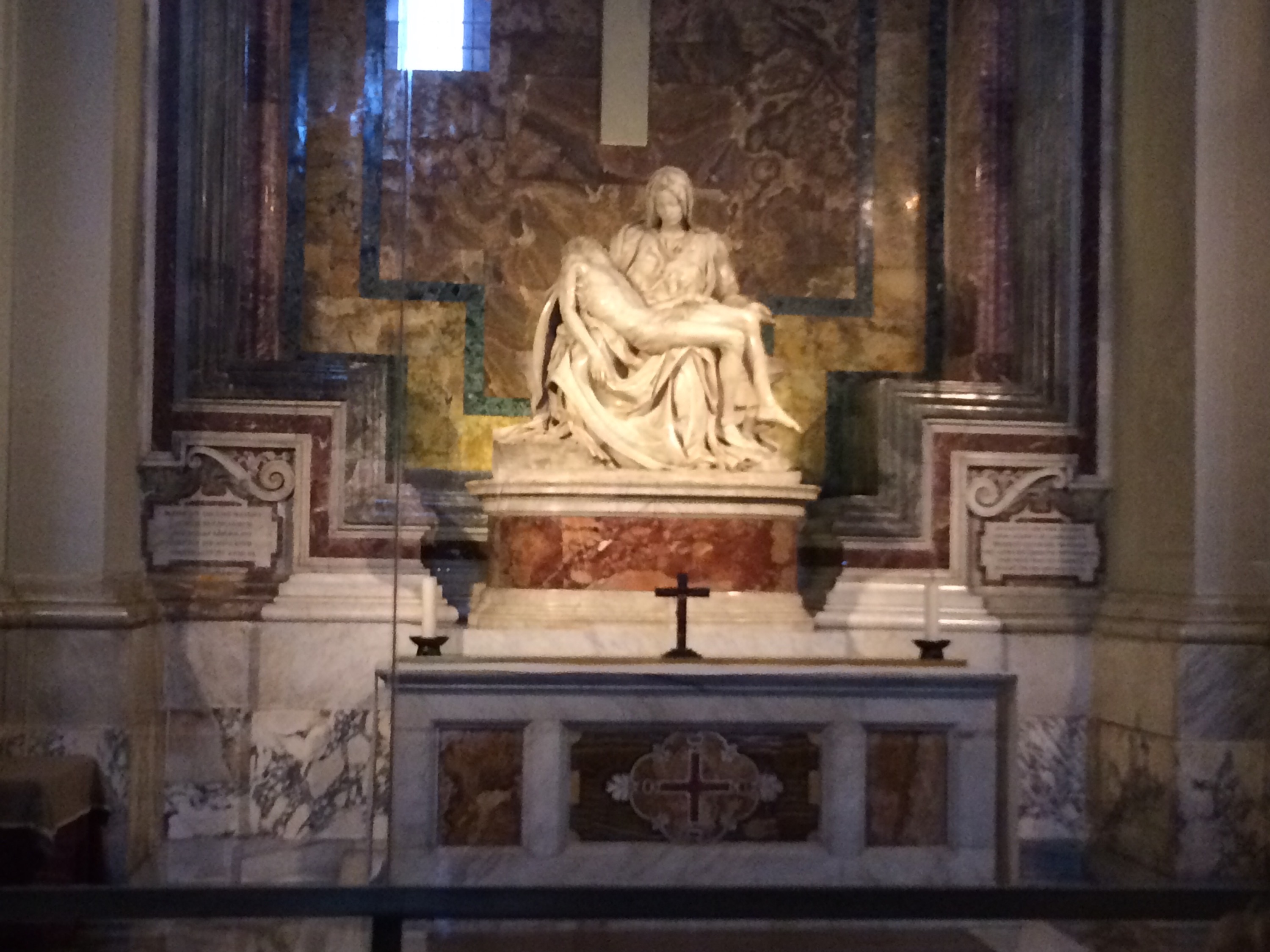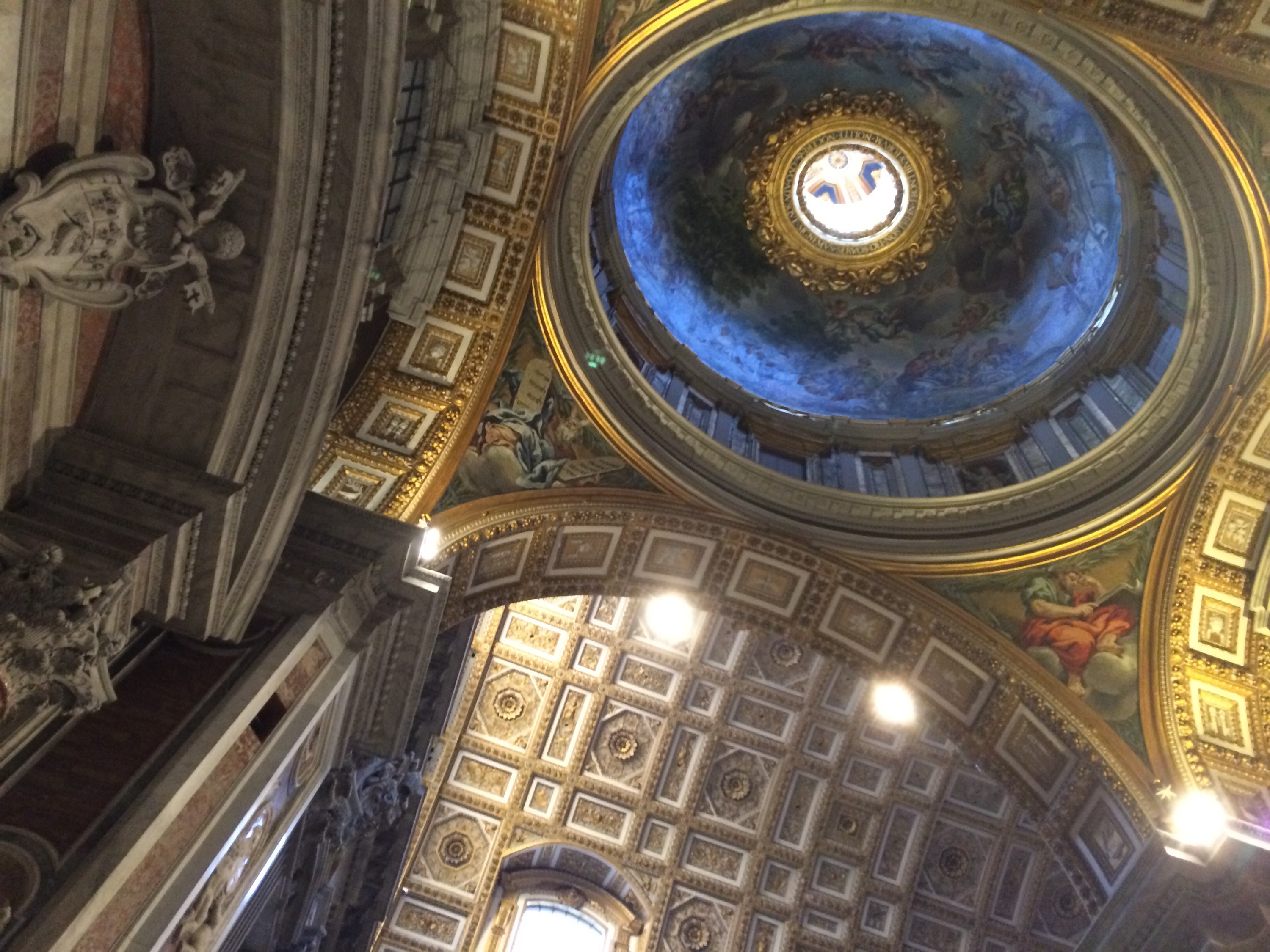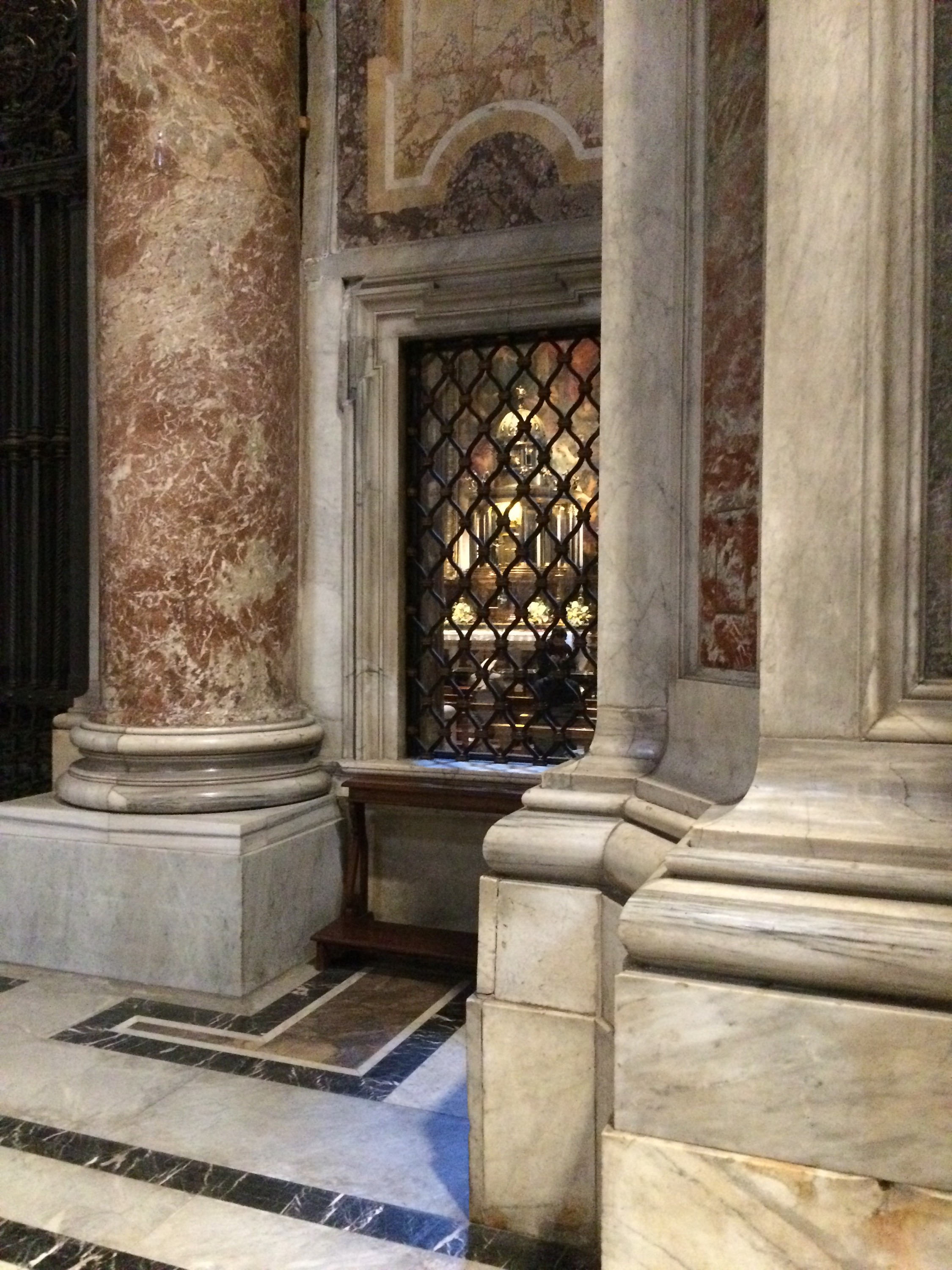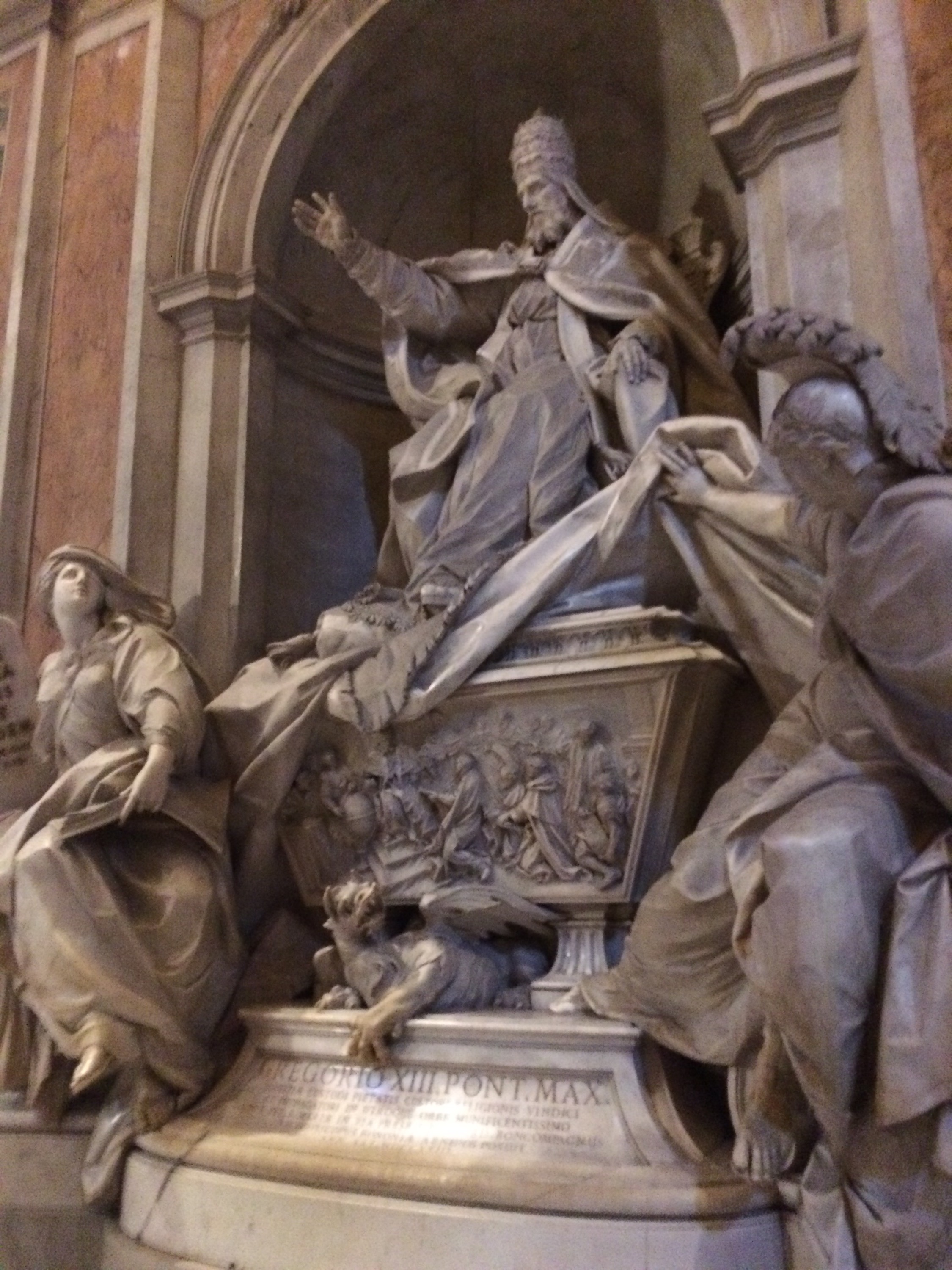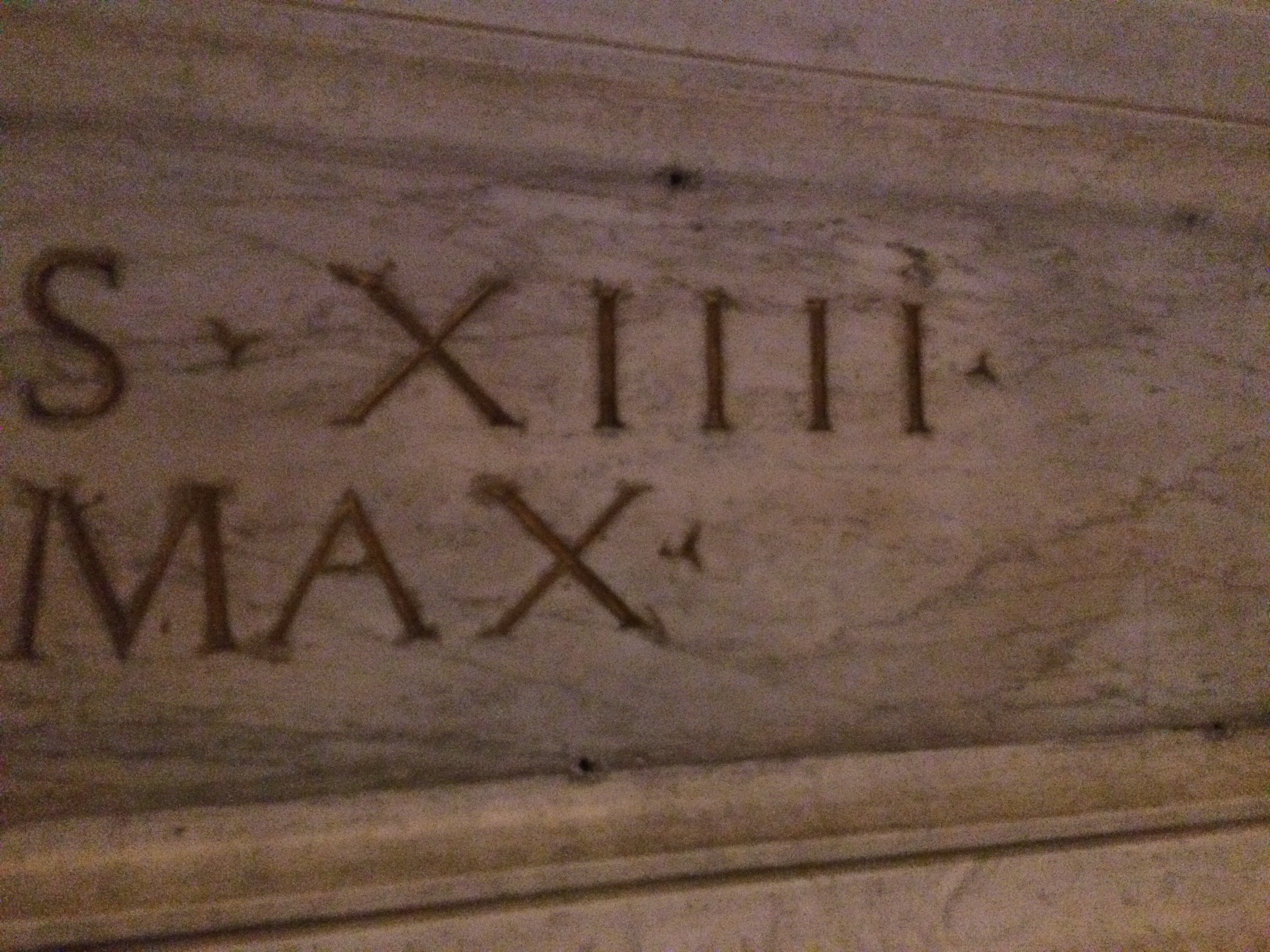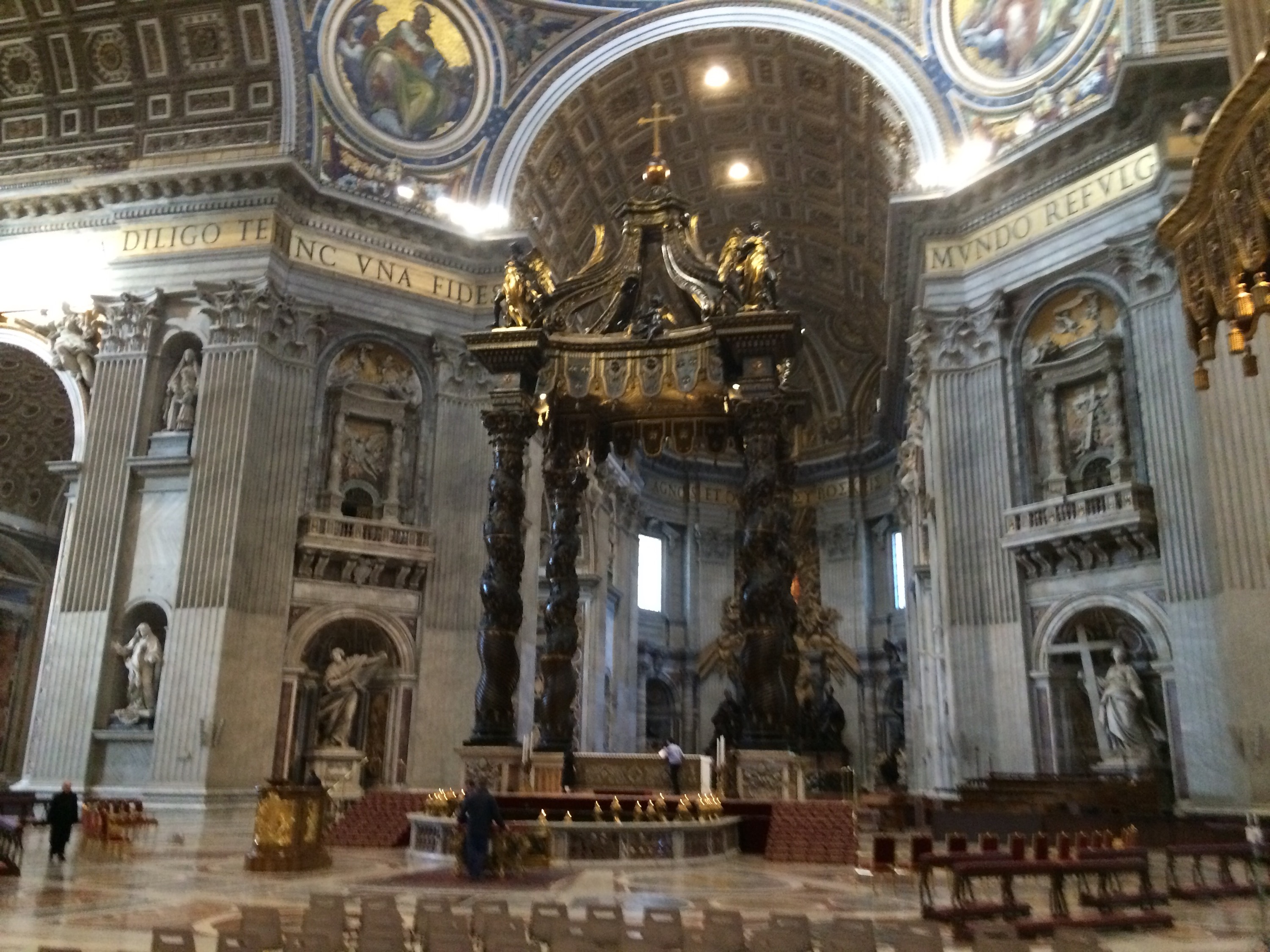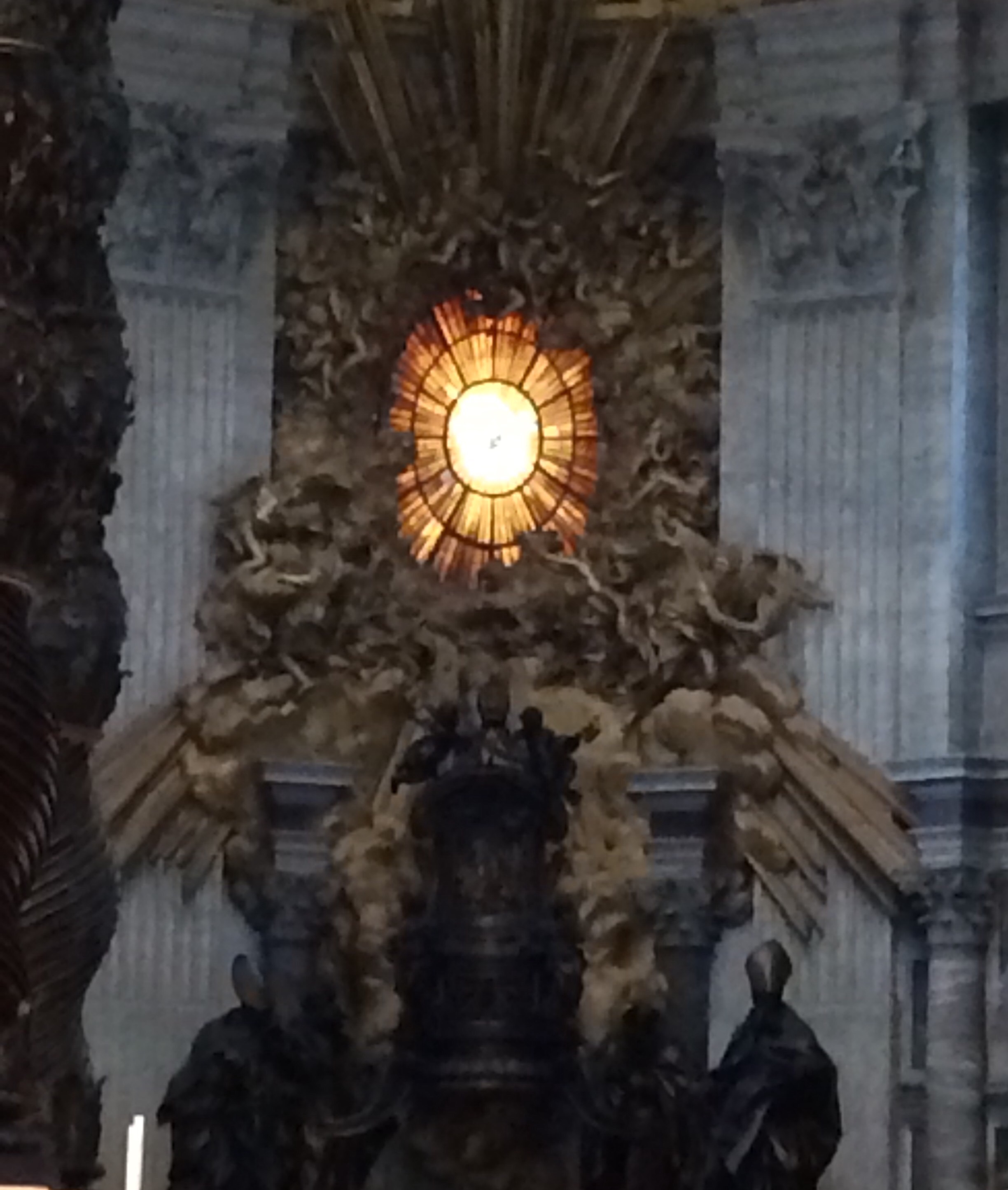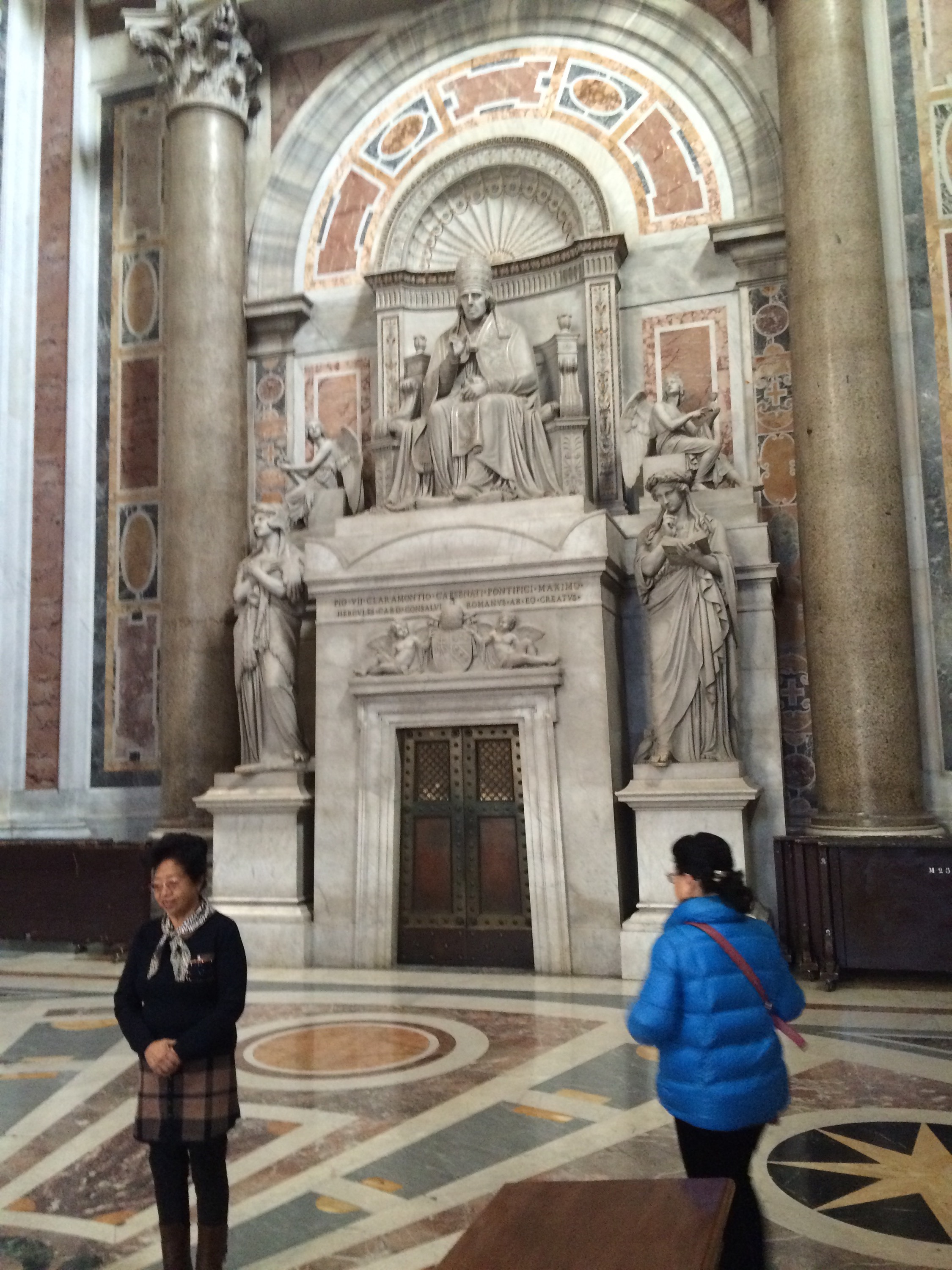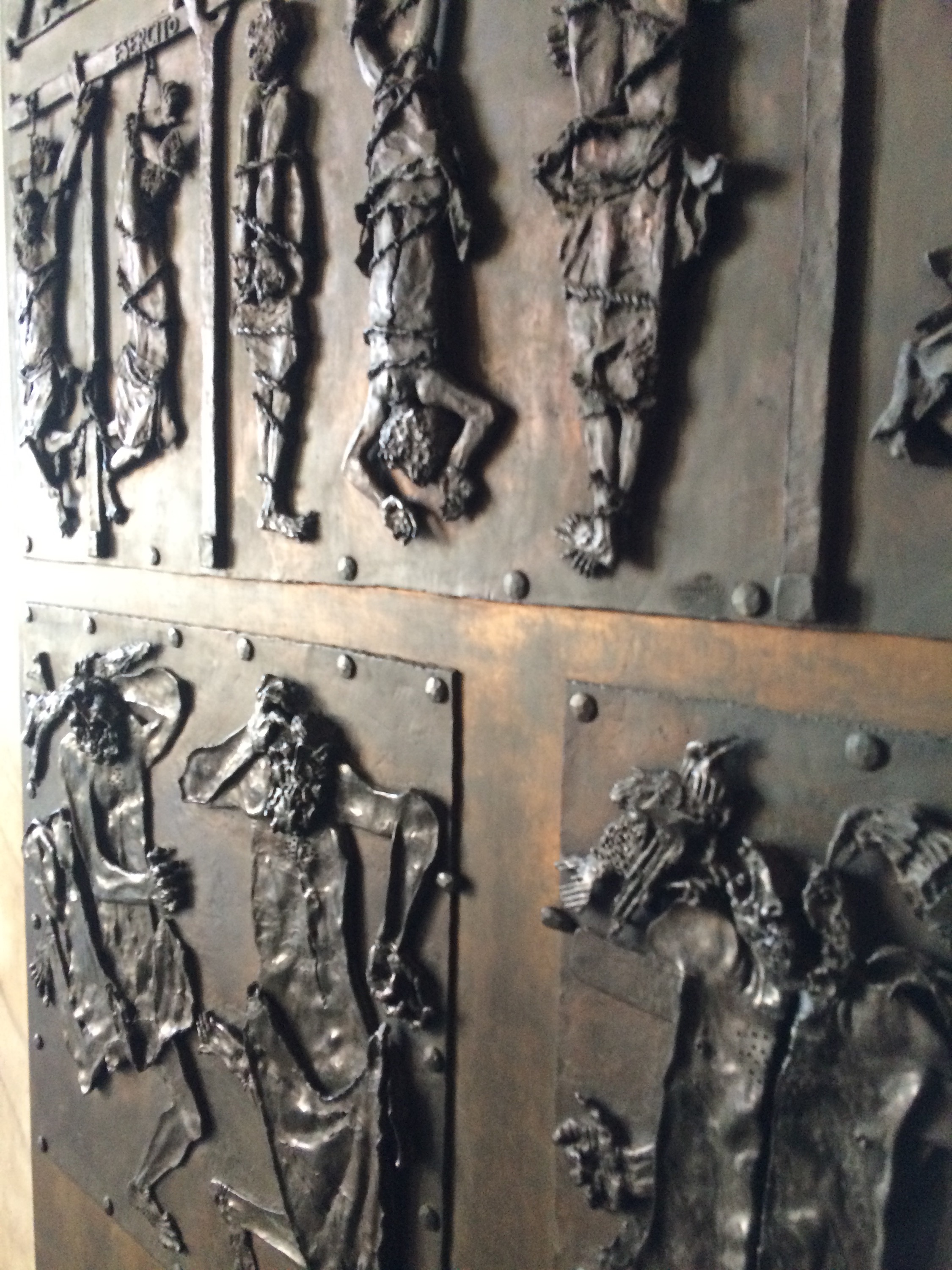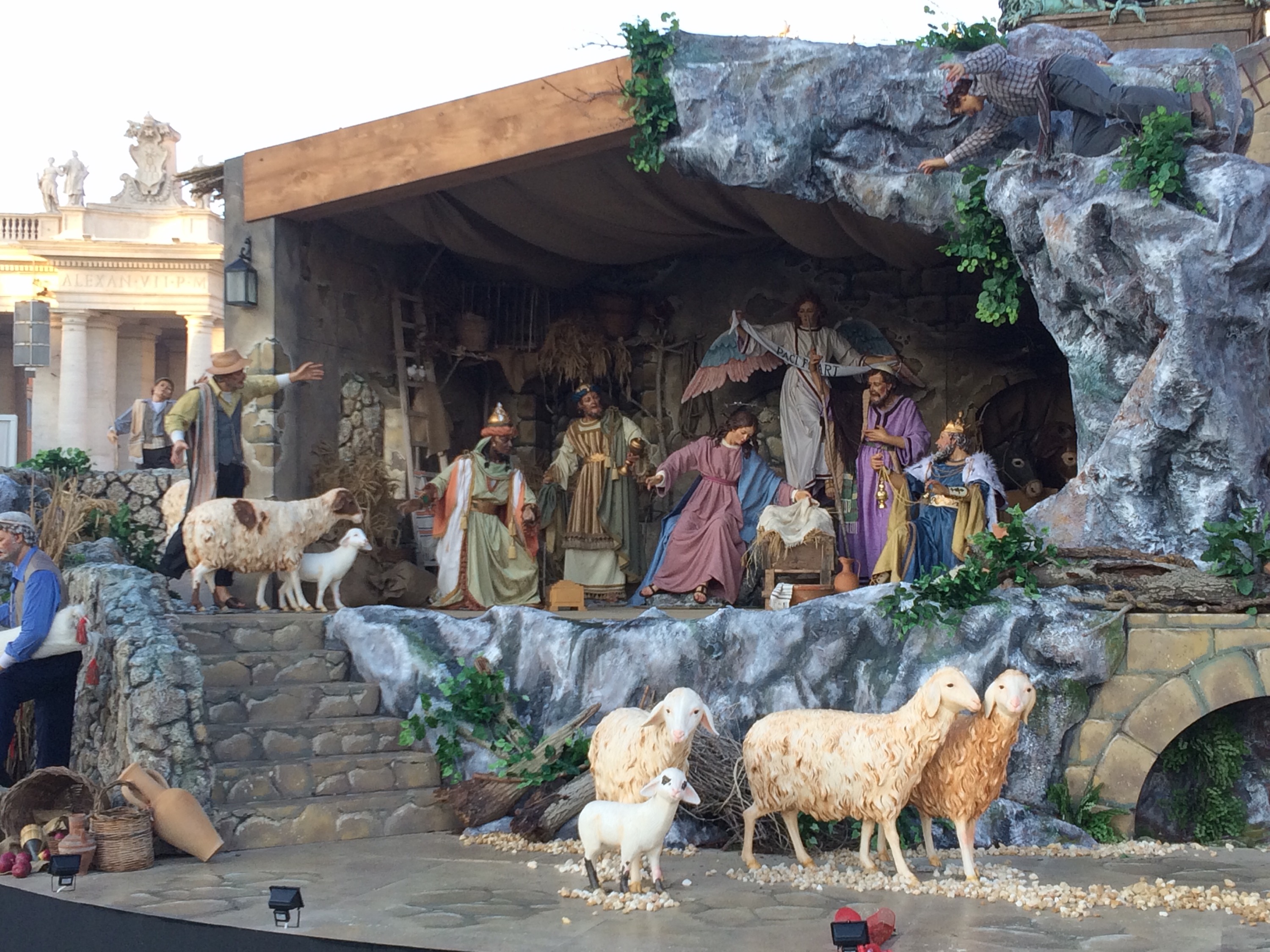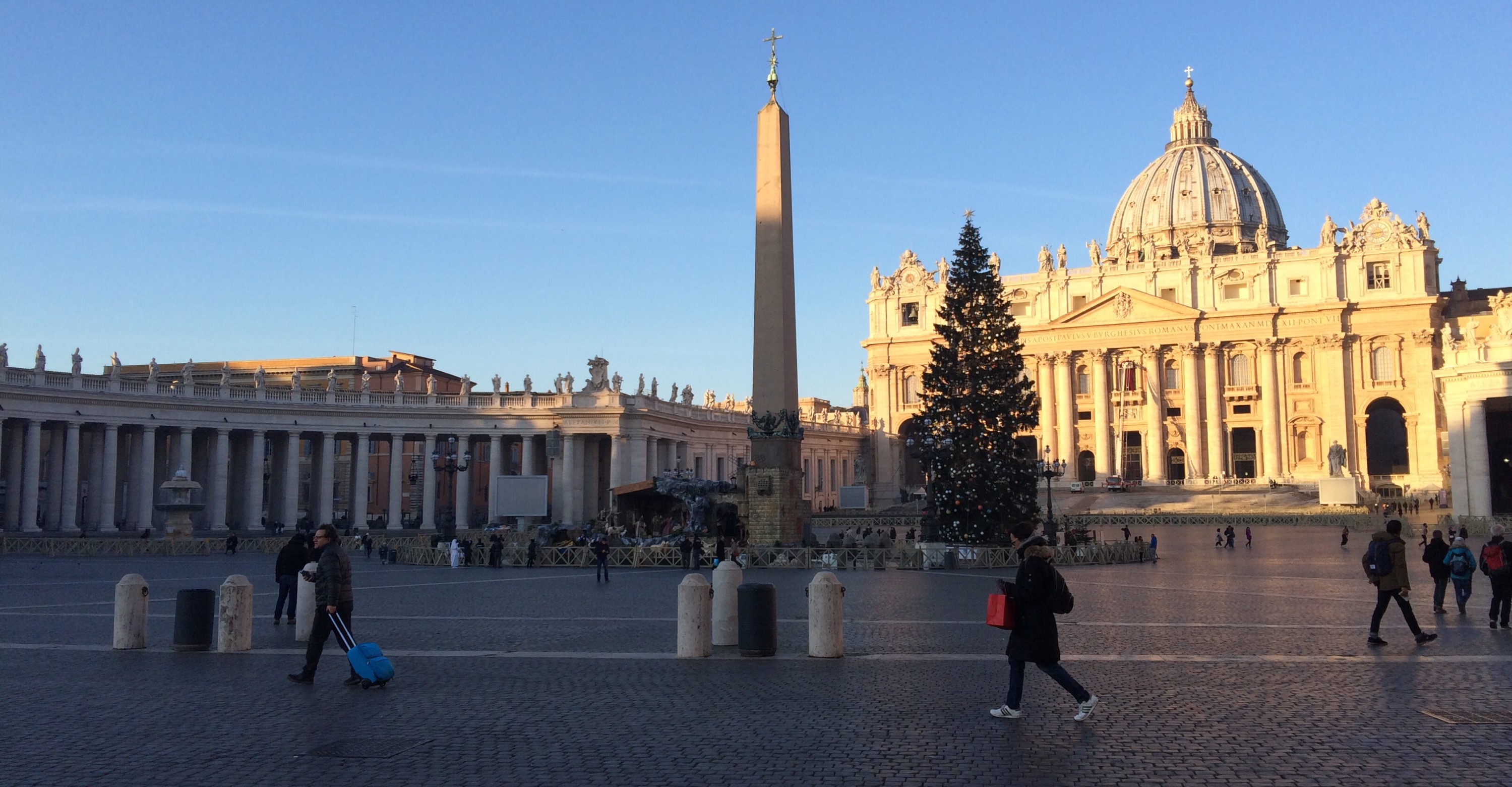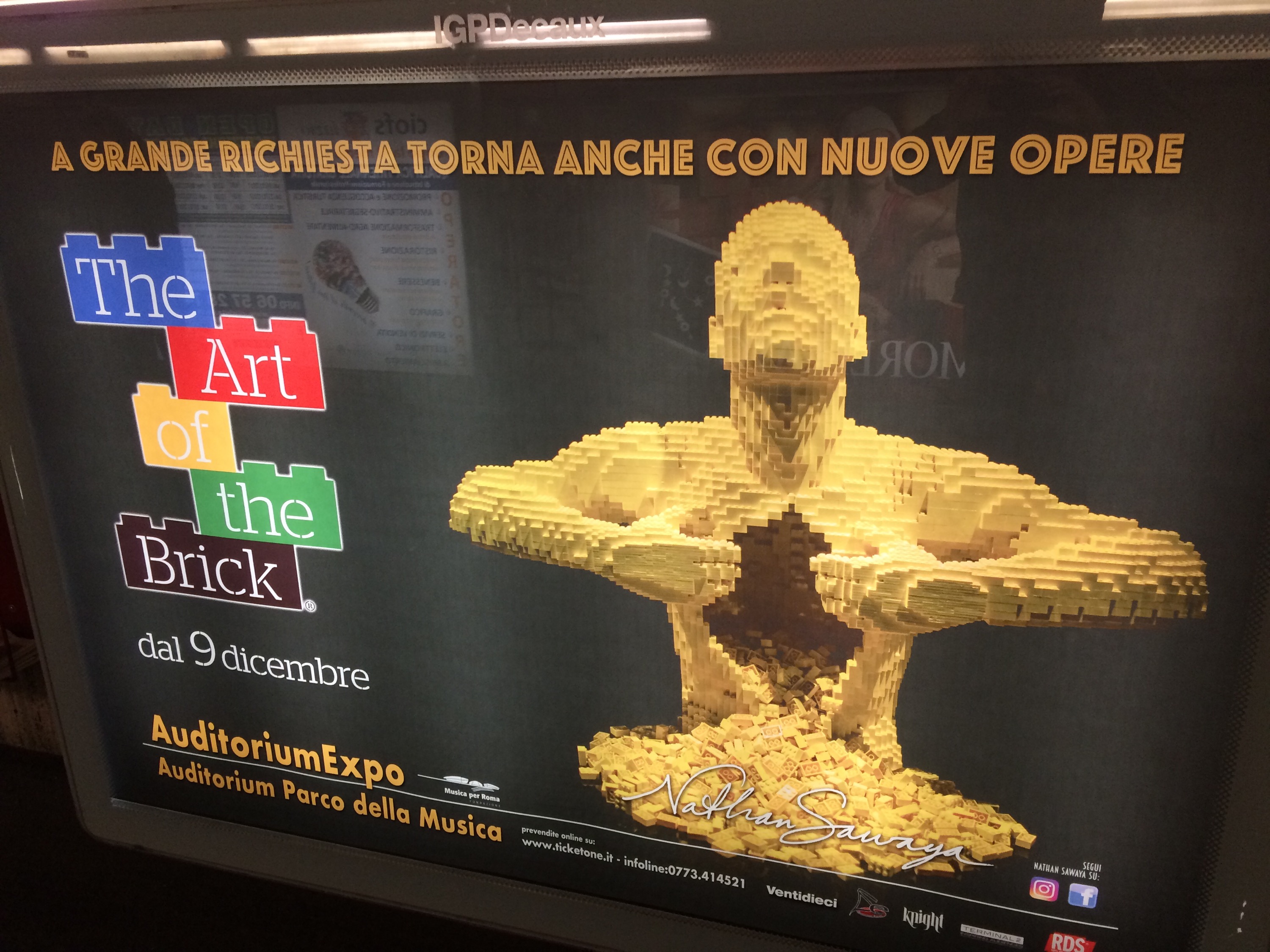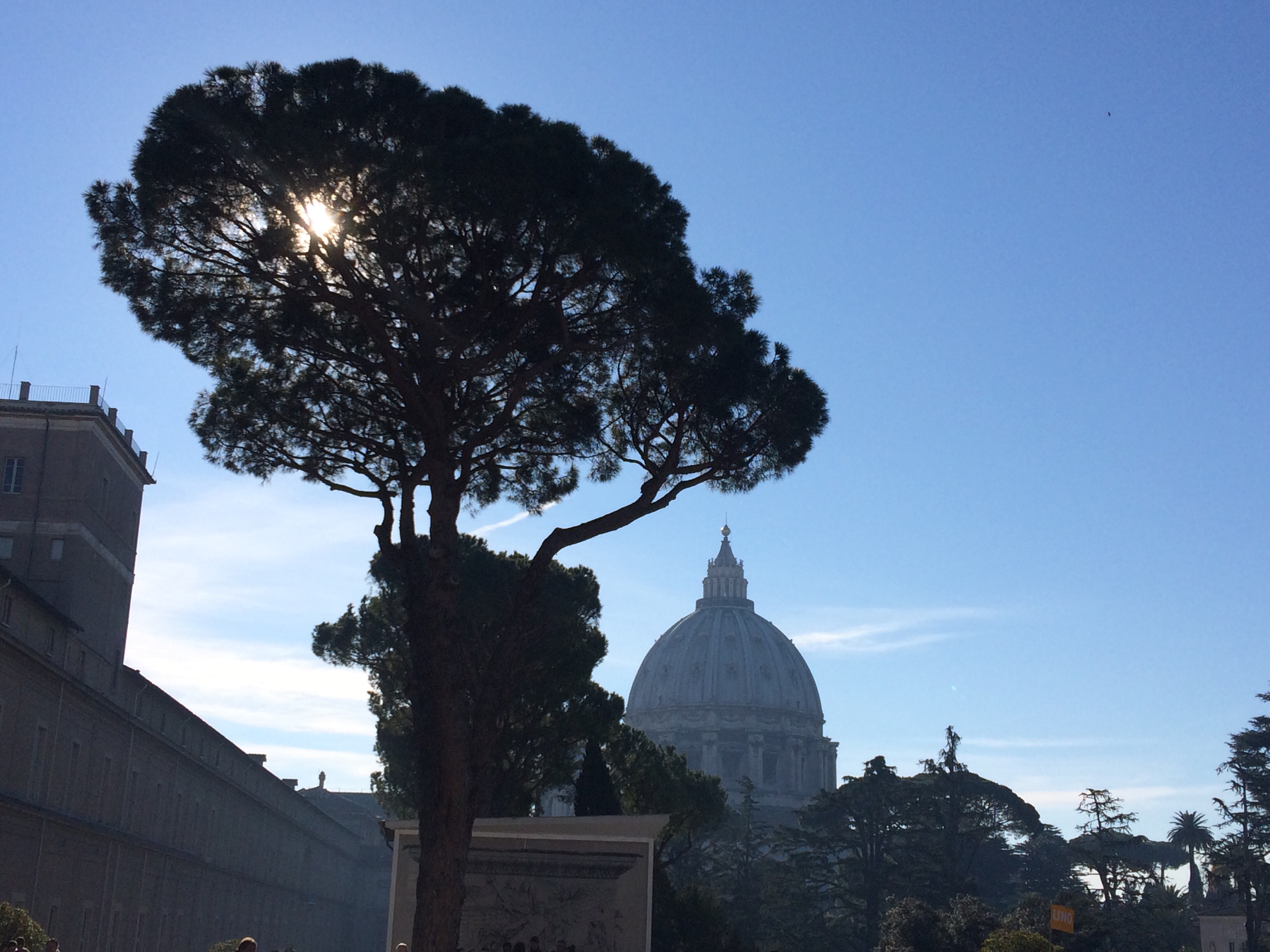 I visited the Vatican Museum after St. Peter’s Basilisk, seen here looking back at the dome.
I visited the Vatican Museum after St. Peter’s Basilisk, seen here looking back at the dome.
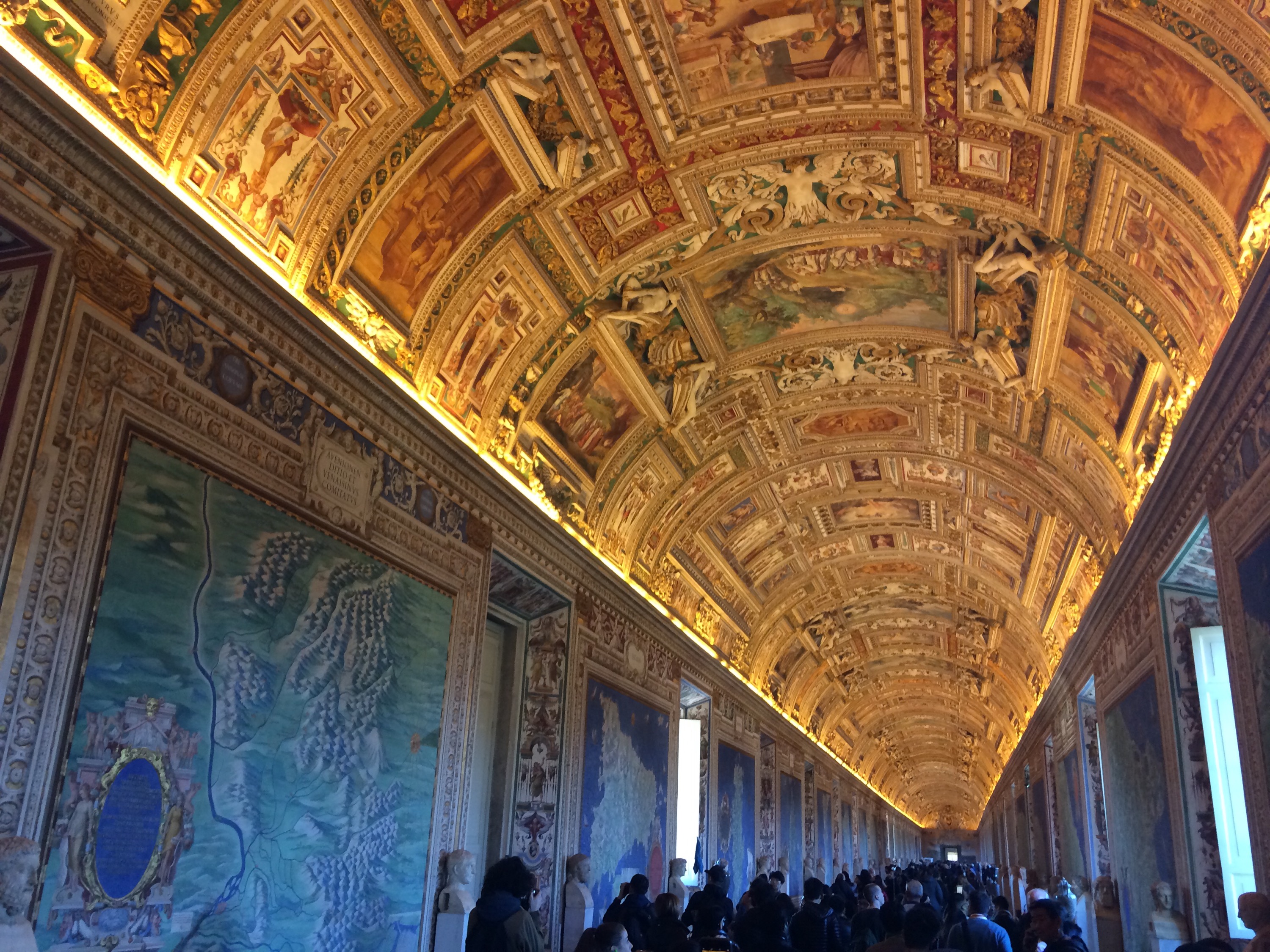 This place is fucking ridiculous. Every inch — floor to ceiling — is crammed with ancient, medieval, and Renaissance artwork. I did, however, especially appreciate the Galleria delle Carte Geografiche.
This place is fucking ridiculous. Every inch — floor to ceiling — is crammed with ancient, medieval, and Renaissance artwork. I did, however, especially appreciate the Galleria delle Carte Geografiche. 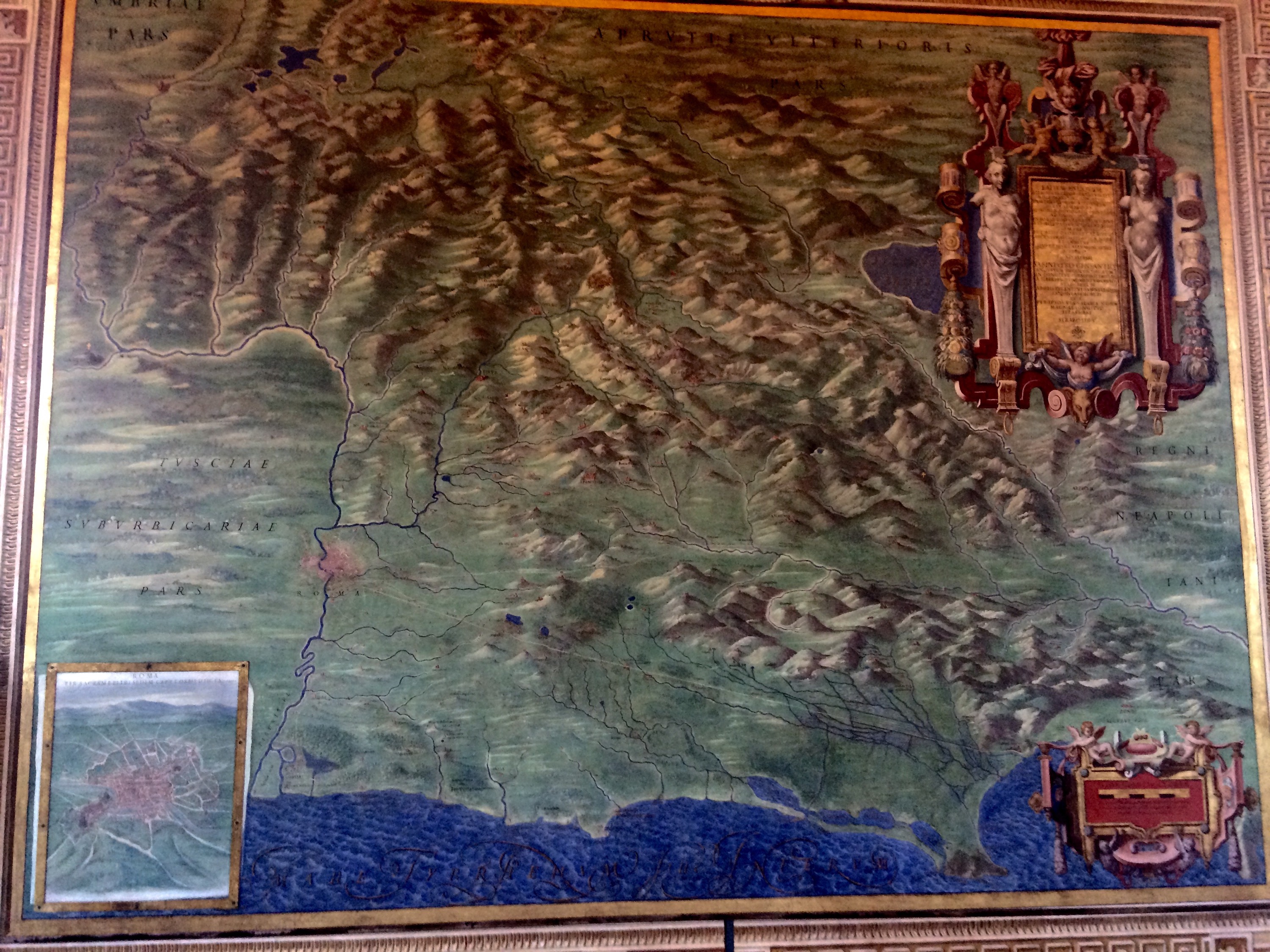 On the left side of the hall hang giant maps from west of the Apennines and the right side hang maps from east of the Apennines.
On the left side of the hall hang giant maps from west of the Apennines and the right side hang maps from east of the Apennines.
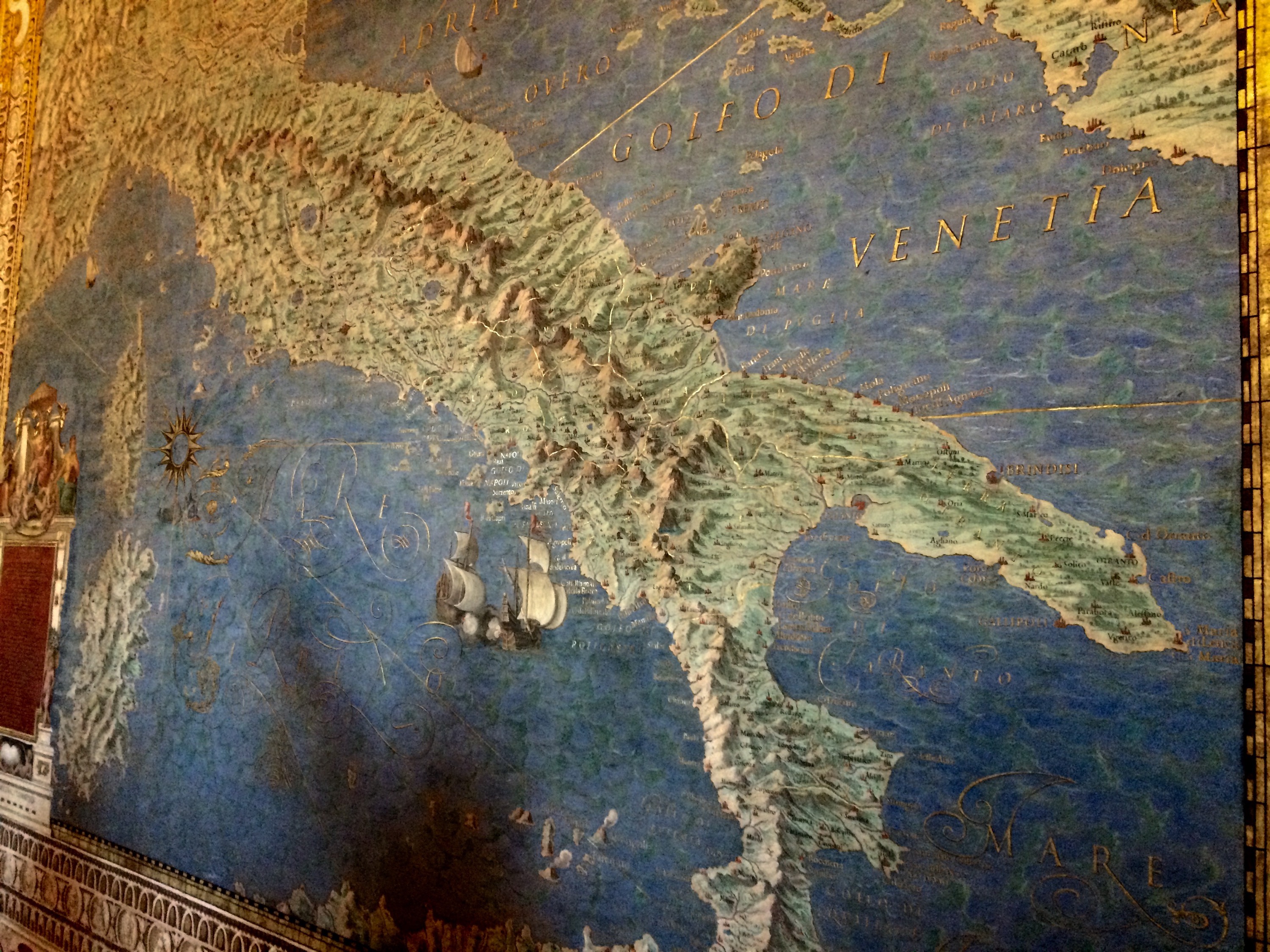 The maps themselves are exquisite, marking every major river and settlement. This map of ancient Italy is paired across the hall with a corresponding map of Renaissance Italy.
The maps themselves are exquisite, marking every major river and settlement. This map of ancient Italy is paired across the hall with a corresponding map of Renaissance Italy.
The crown jewel of the museum, however, is the Sistine Chapel. (Photos and speaking are forbidden inside the chapel, so I’ll use stock pictures here.)
Working backwards from Revelation to Genesis, the back wall is covered with Michelangelo‘s The Last Judgment. The damned exiled to Hell in the bottom right corner echoes the horrors of Heironymous Bosch. Supposedly, the flayed skin held by St. Barthol0mew is a self-portrait of Michelangelo himself. Or, as one of my film cohort once said, “Have you seen that shit? Fucked up homosexual motherfucker.”
The damned exiled to Hell in the bottom right corner echoes the horrors of Heironymous Bosch. Supposedly, the flayed skin held by St. Barthol0mew is a self-portrait of Michelangelo himself. Or, as one of my film cohort once said, “Have you seen that shit? Fucked up homosexual motherfucker.”
But for me, the most awe-inspiring and mesmerizing was The Creation of Adam painted on the chapel ceiling. Although that might be because a mere week ago I stumbled on the hiding-in-plain-sight theory that God and his host are in the shape of the human brain.
Although that might be because a mere week ago I stumbled on the hiding-in-plain-sight theory that God and his host are in the shape of the human brain.
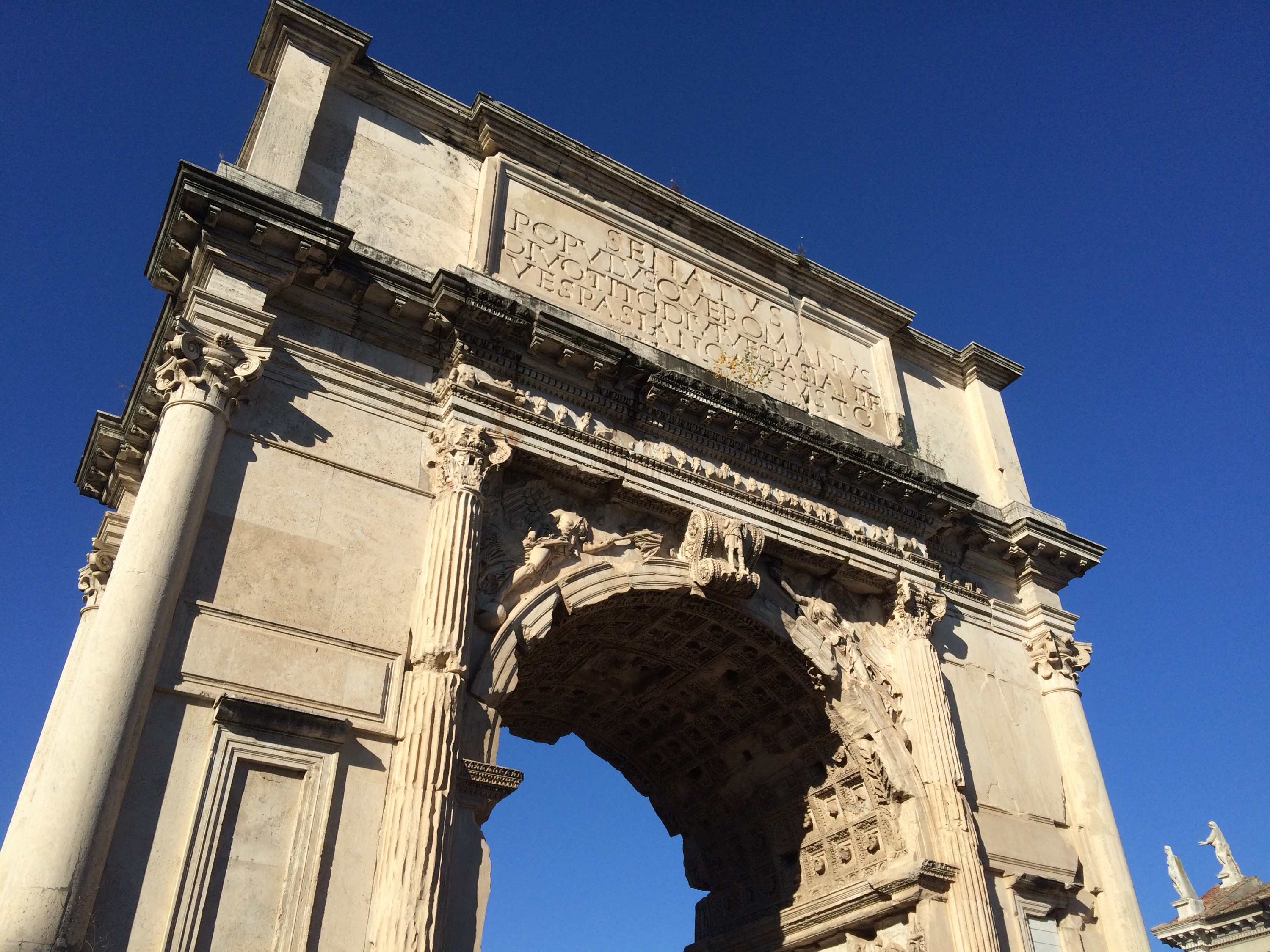 This is the Arch of Titus, built by Domitian in 81 C.E. to celebrate his recently deceased brother Titus.
This is the Arch of Titus, built by Domitian in 81 C.E. to celebrate his recently deceased brother Titus.
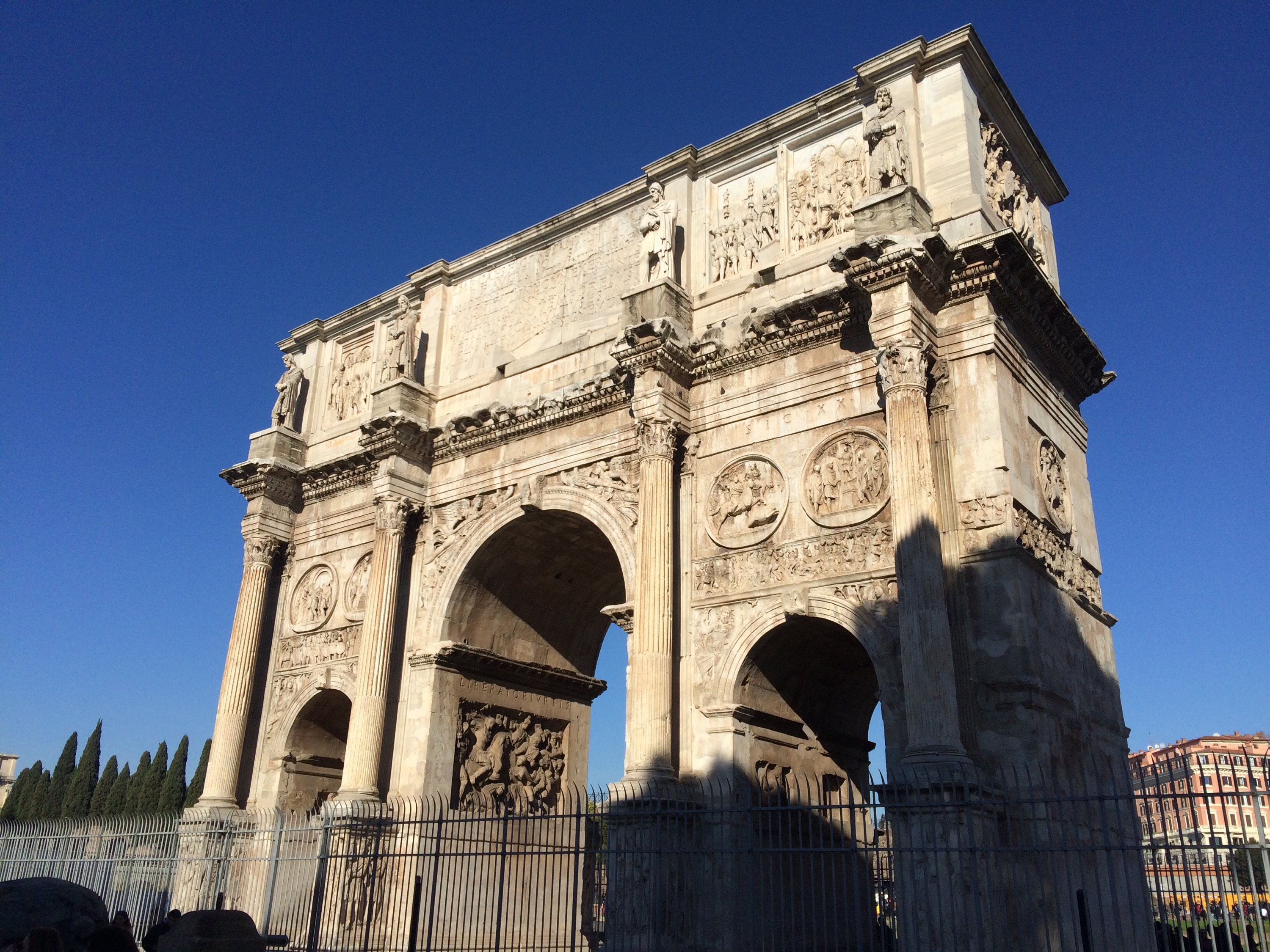
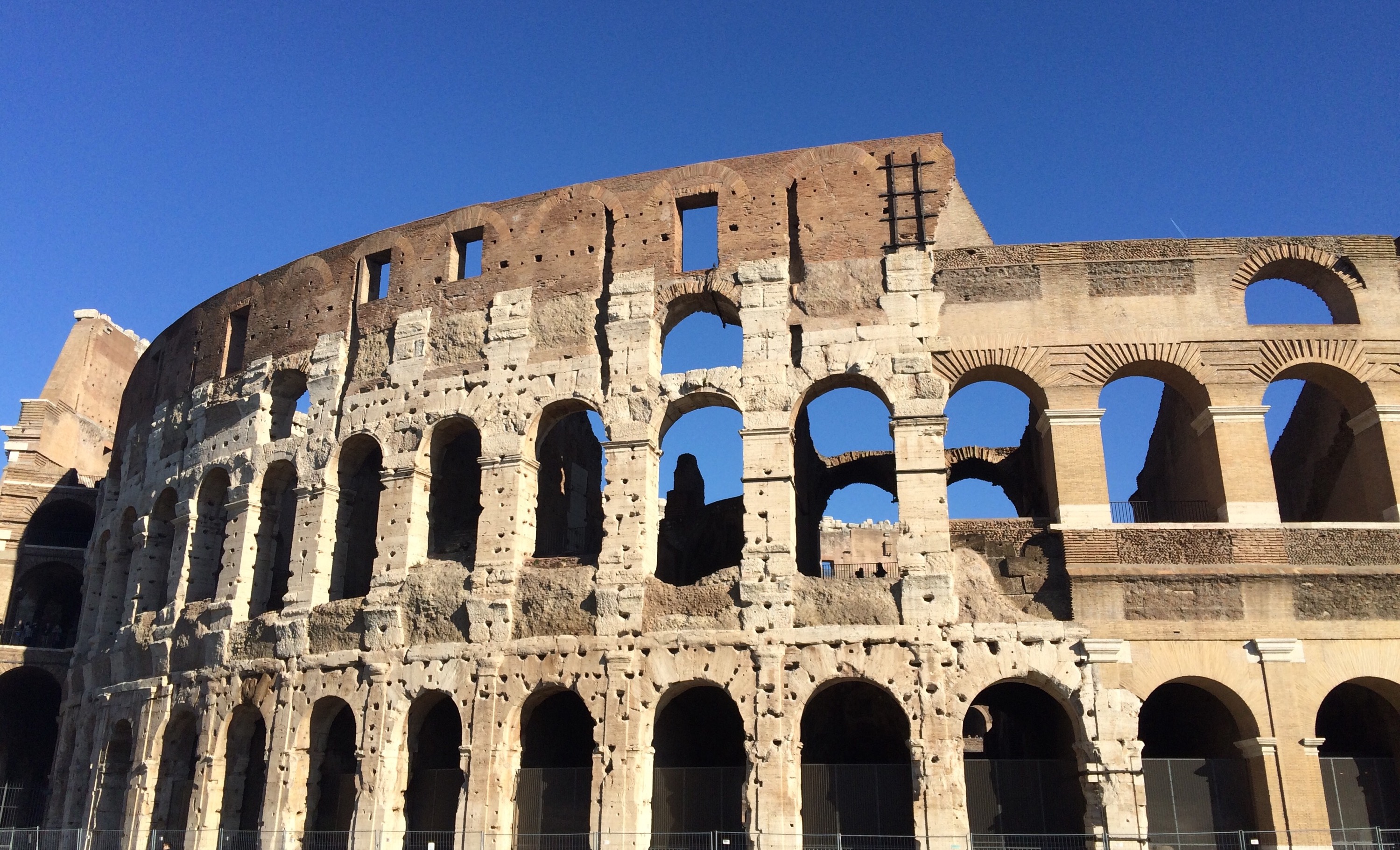
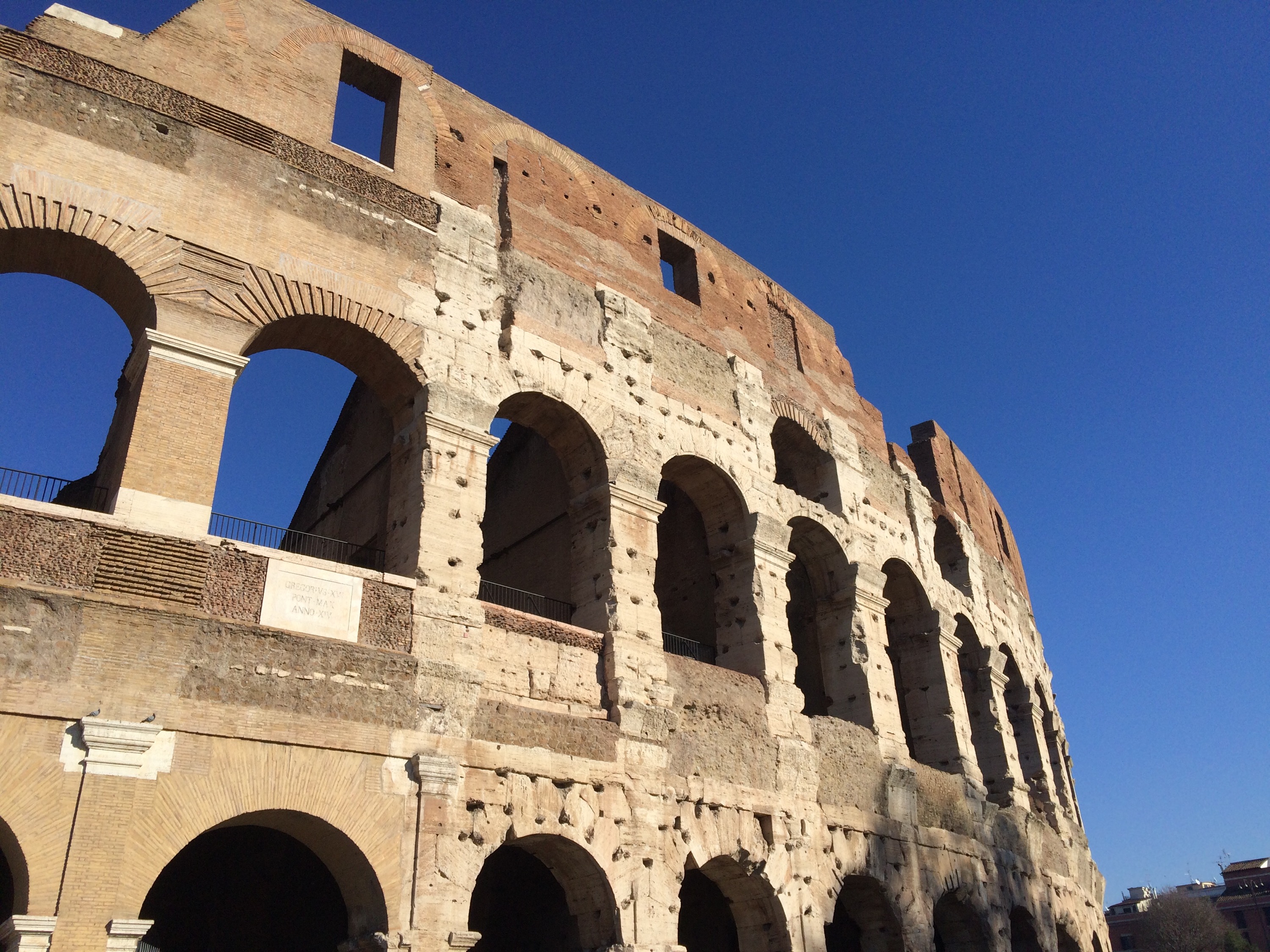
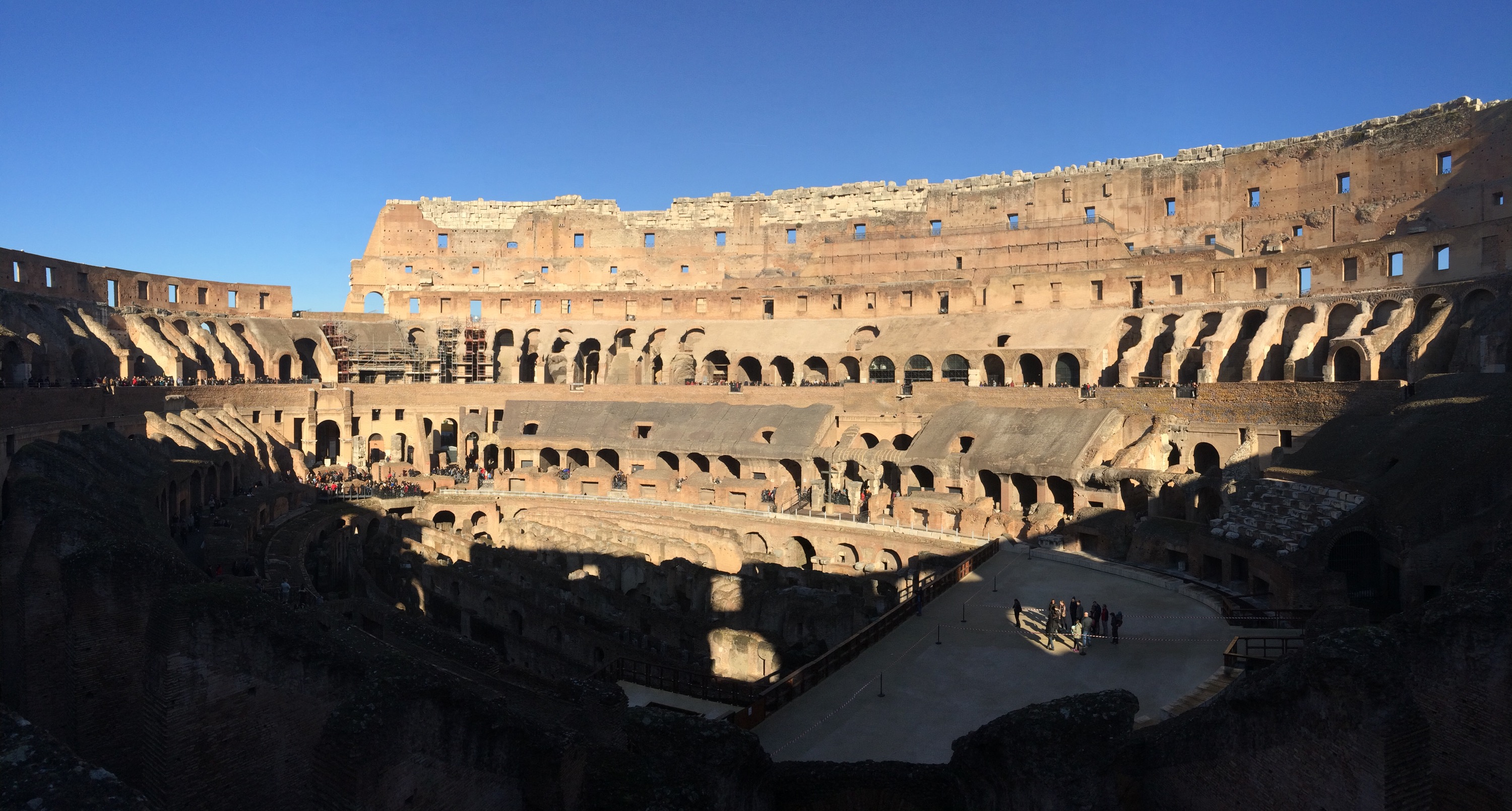
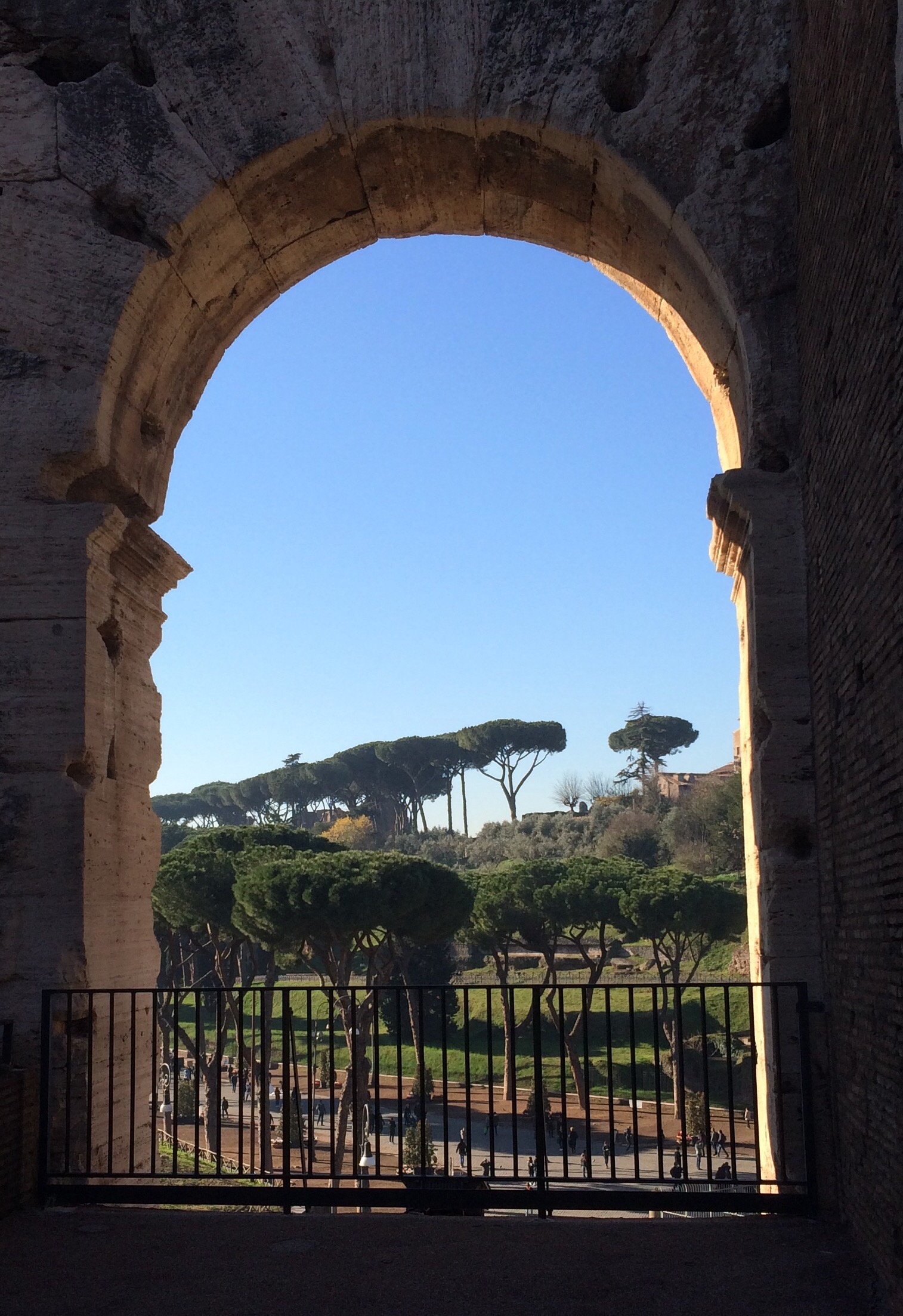
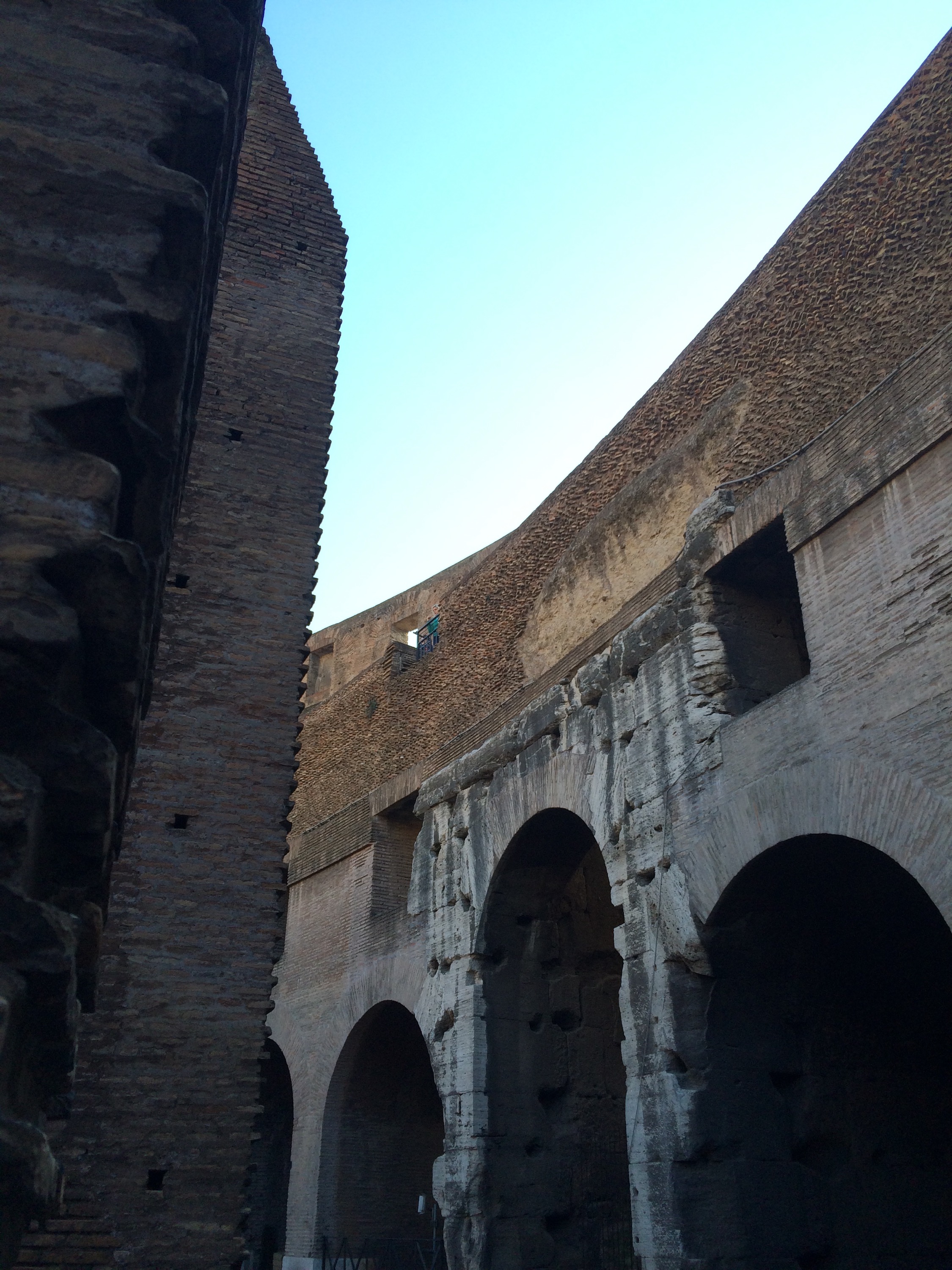
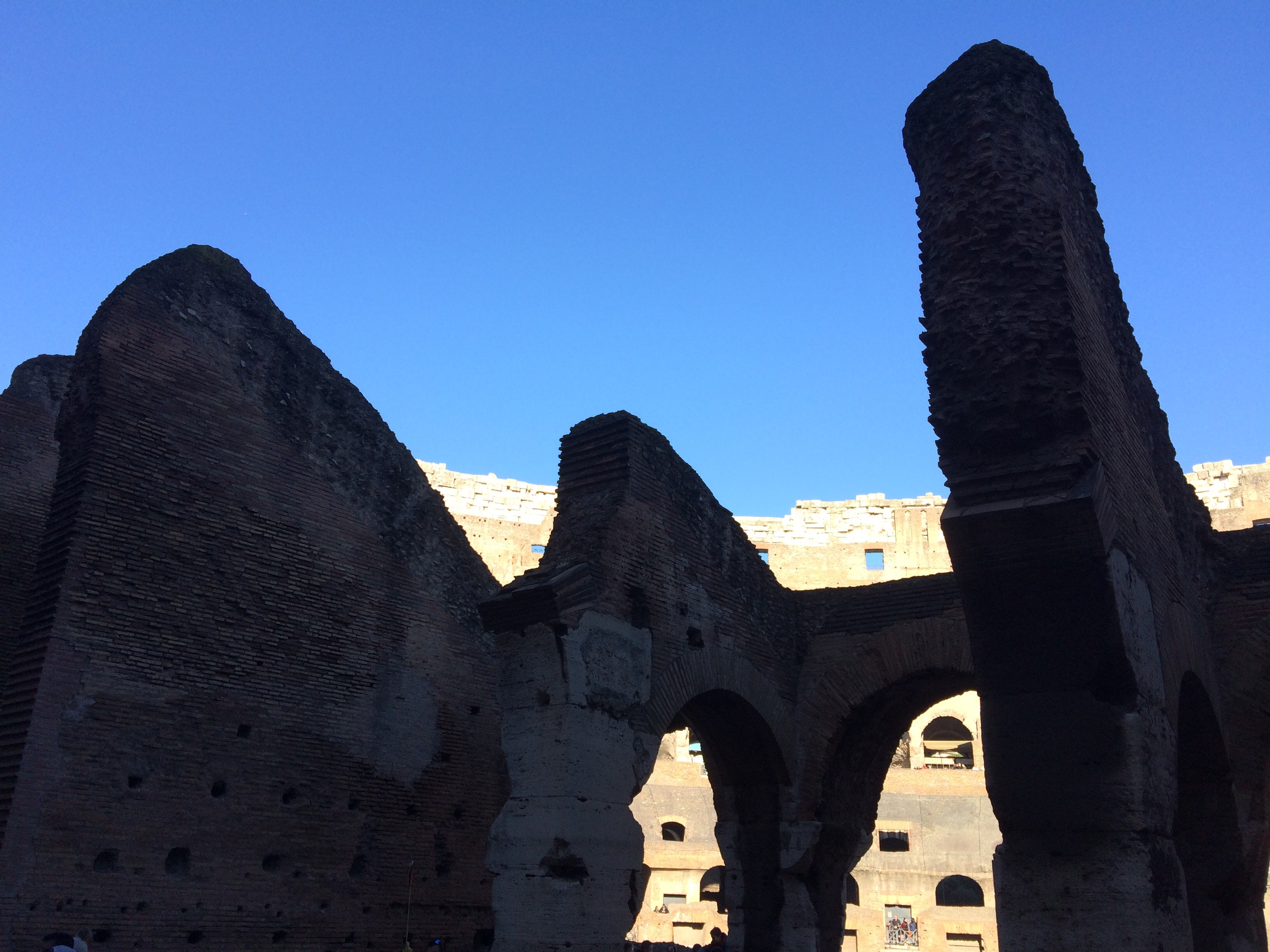
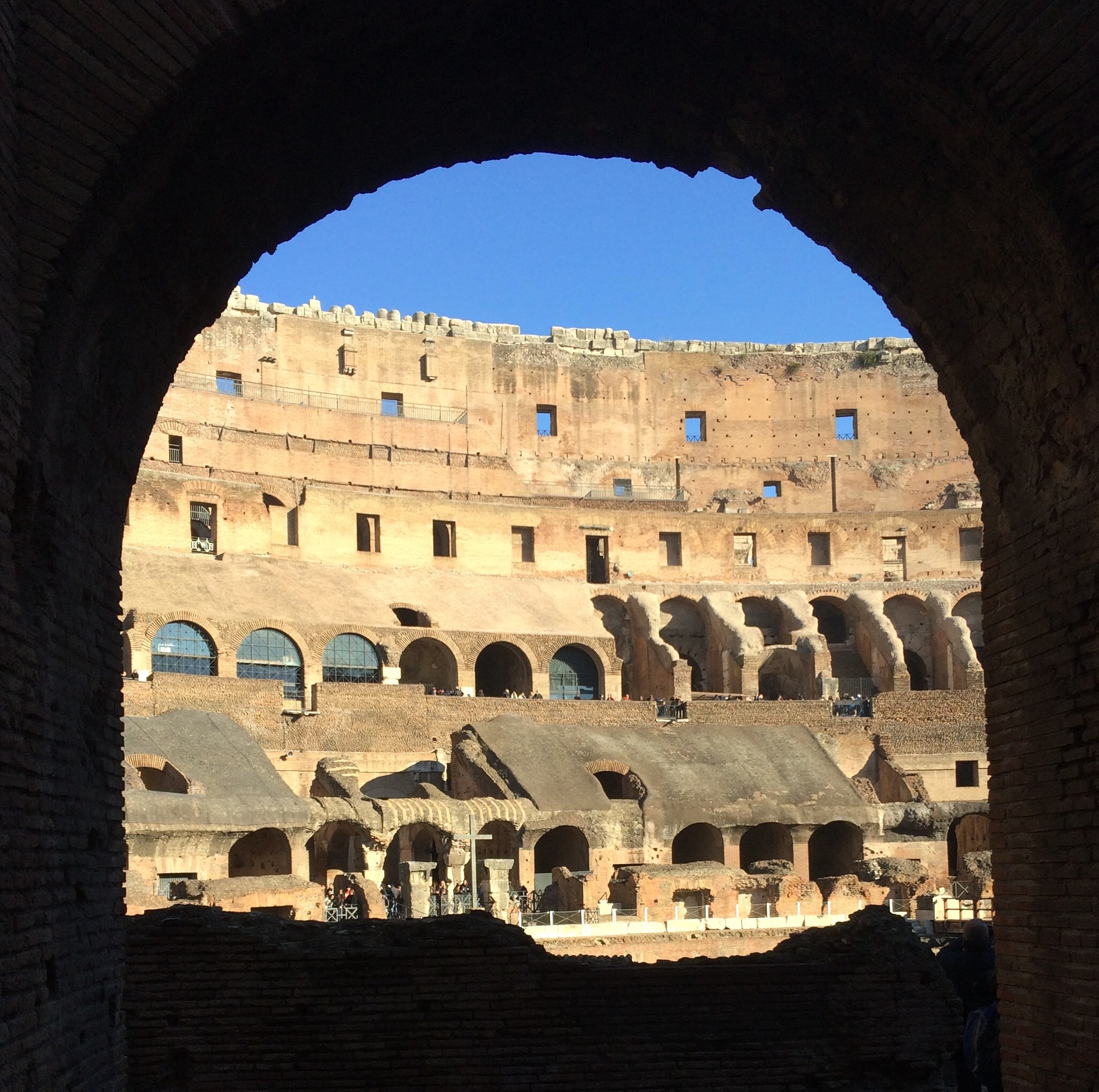
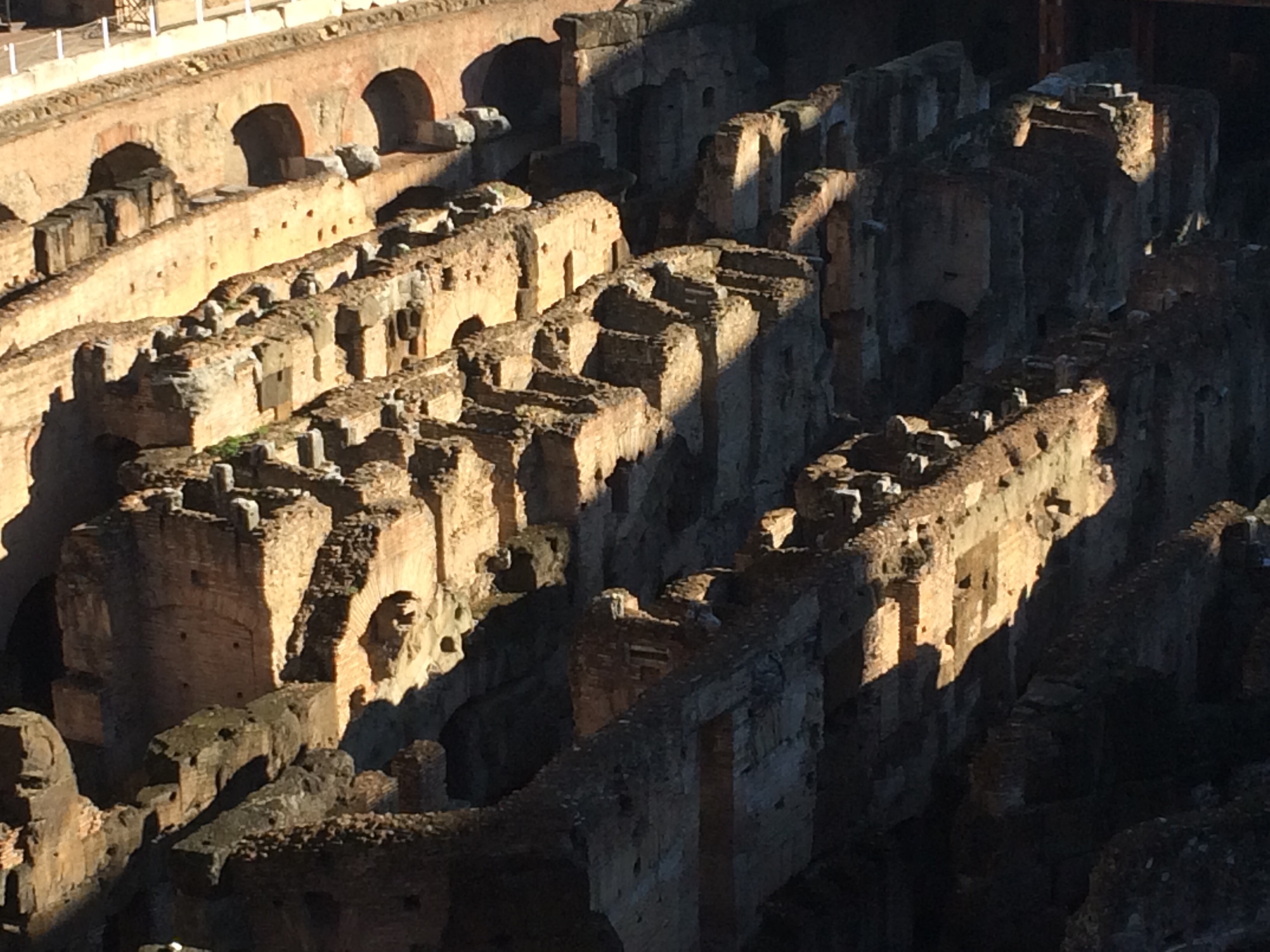
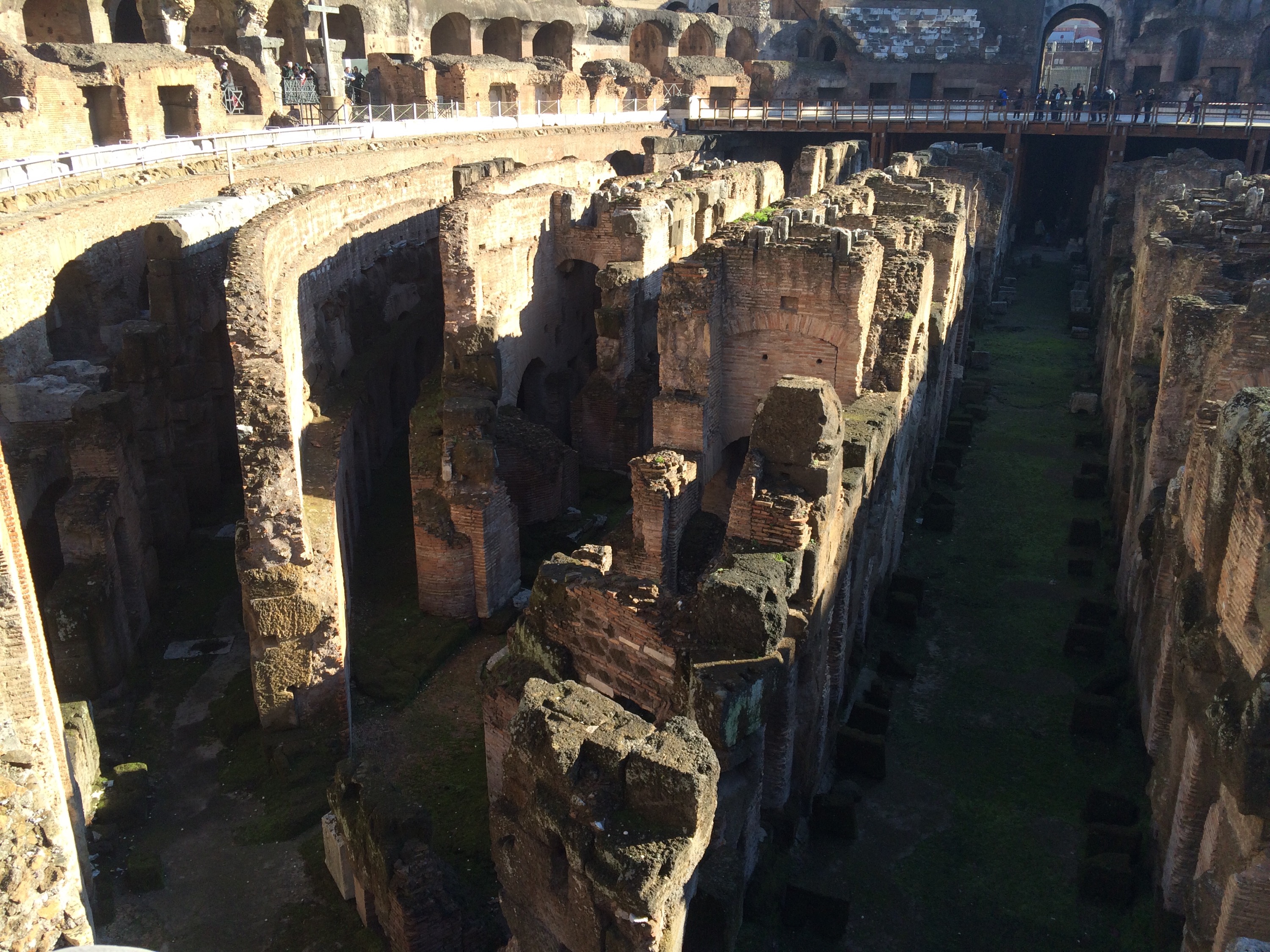
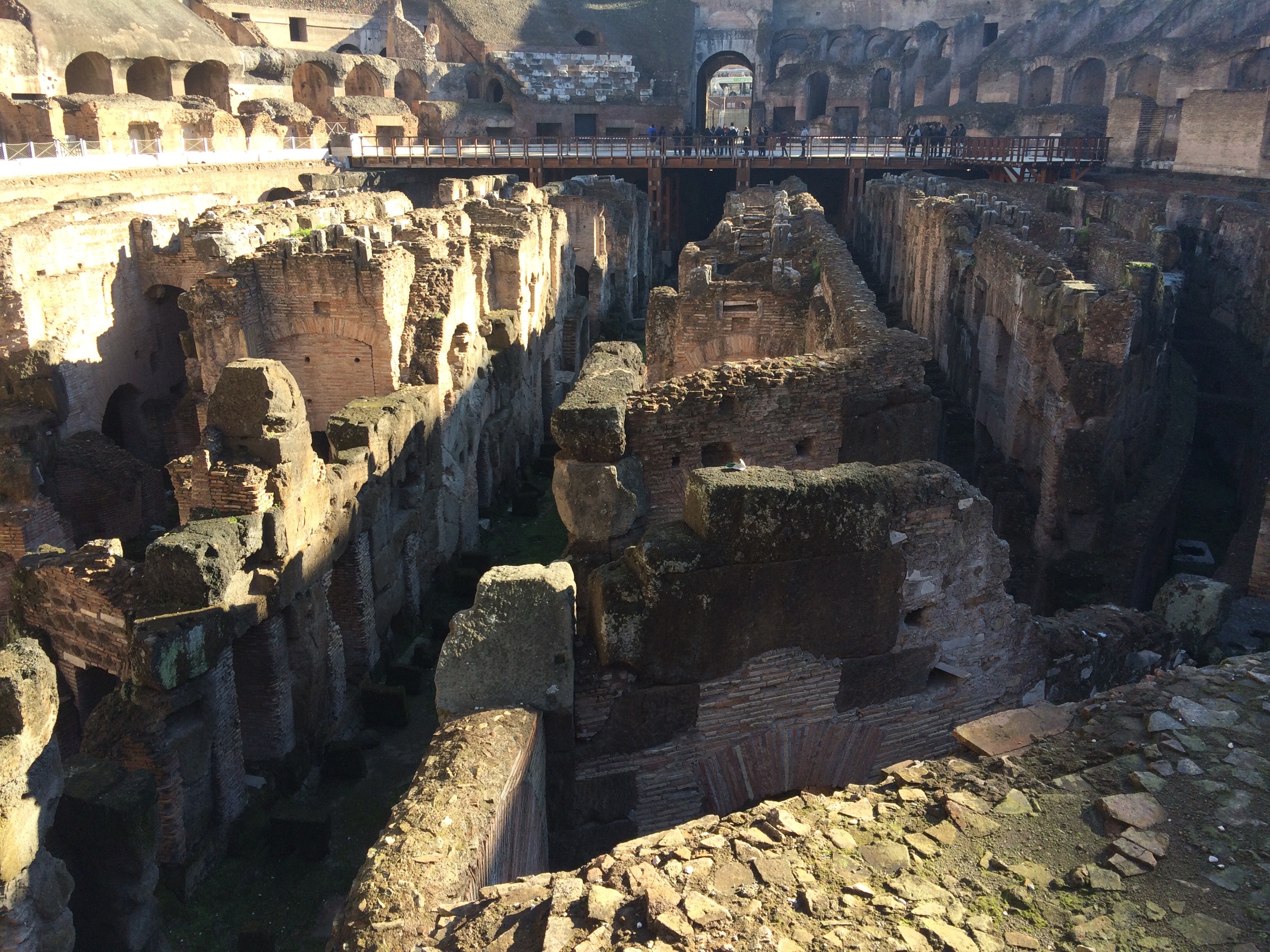
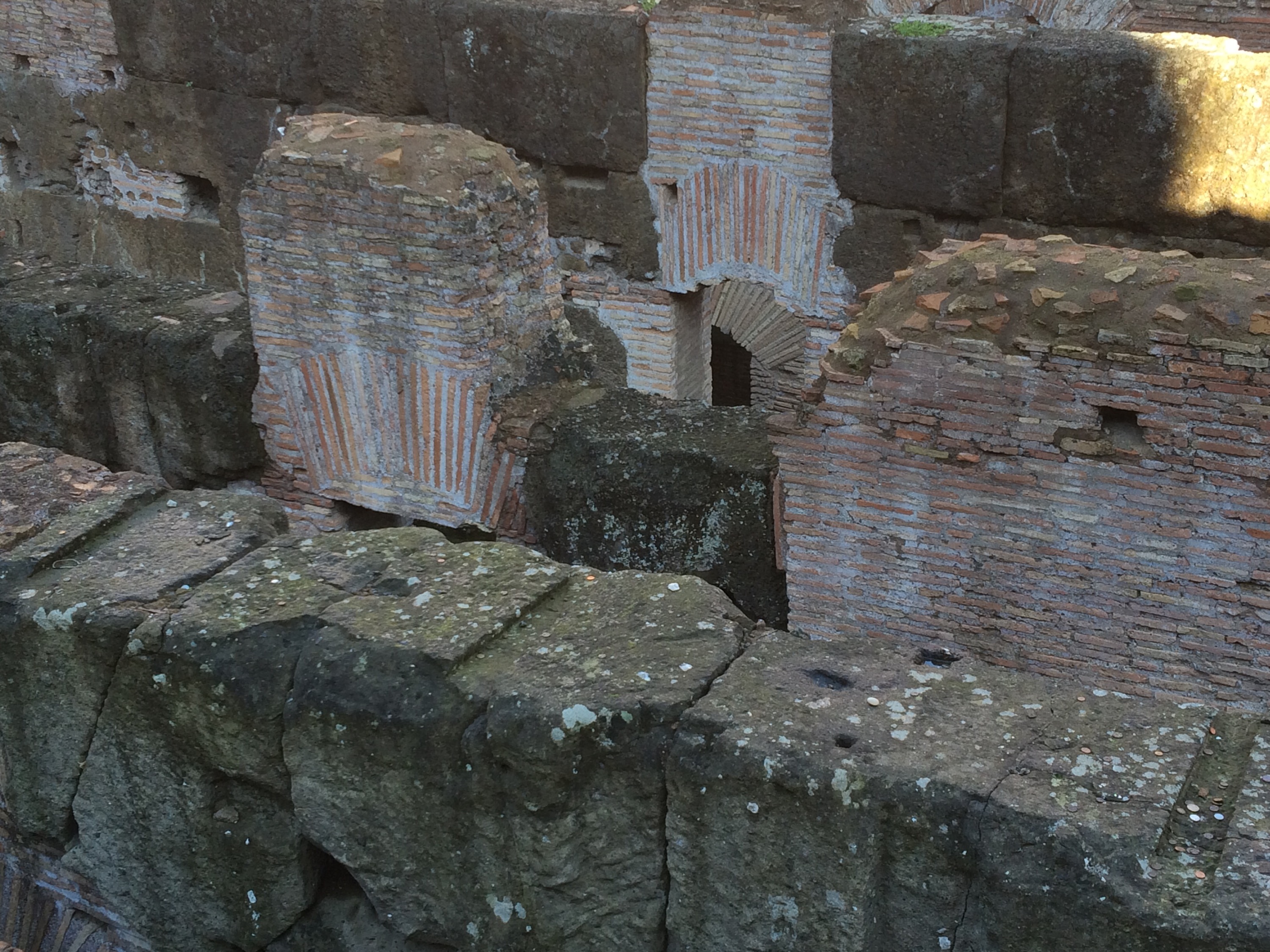
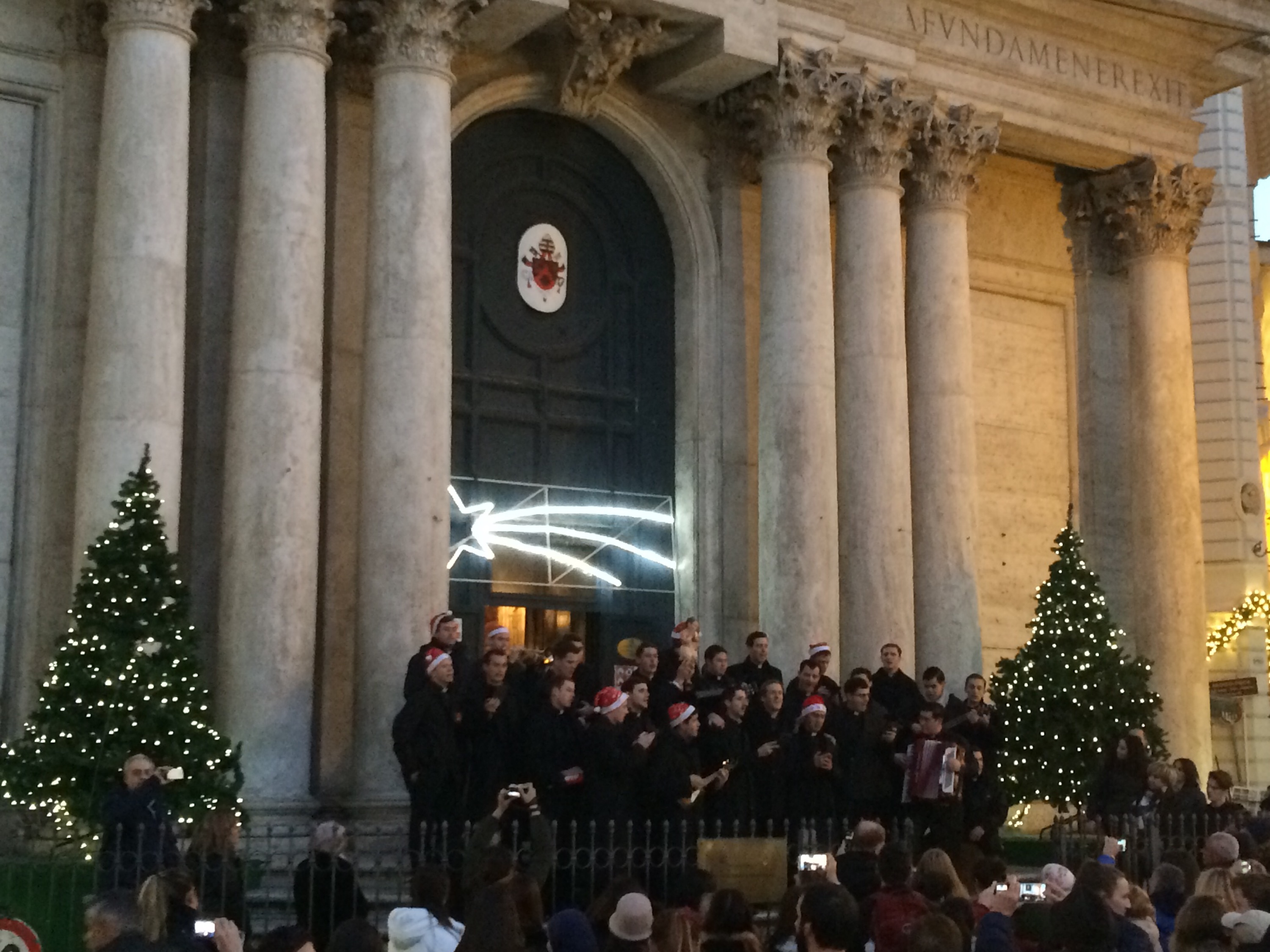
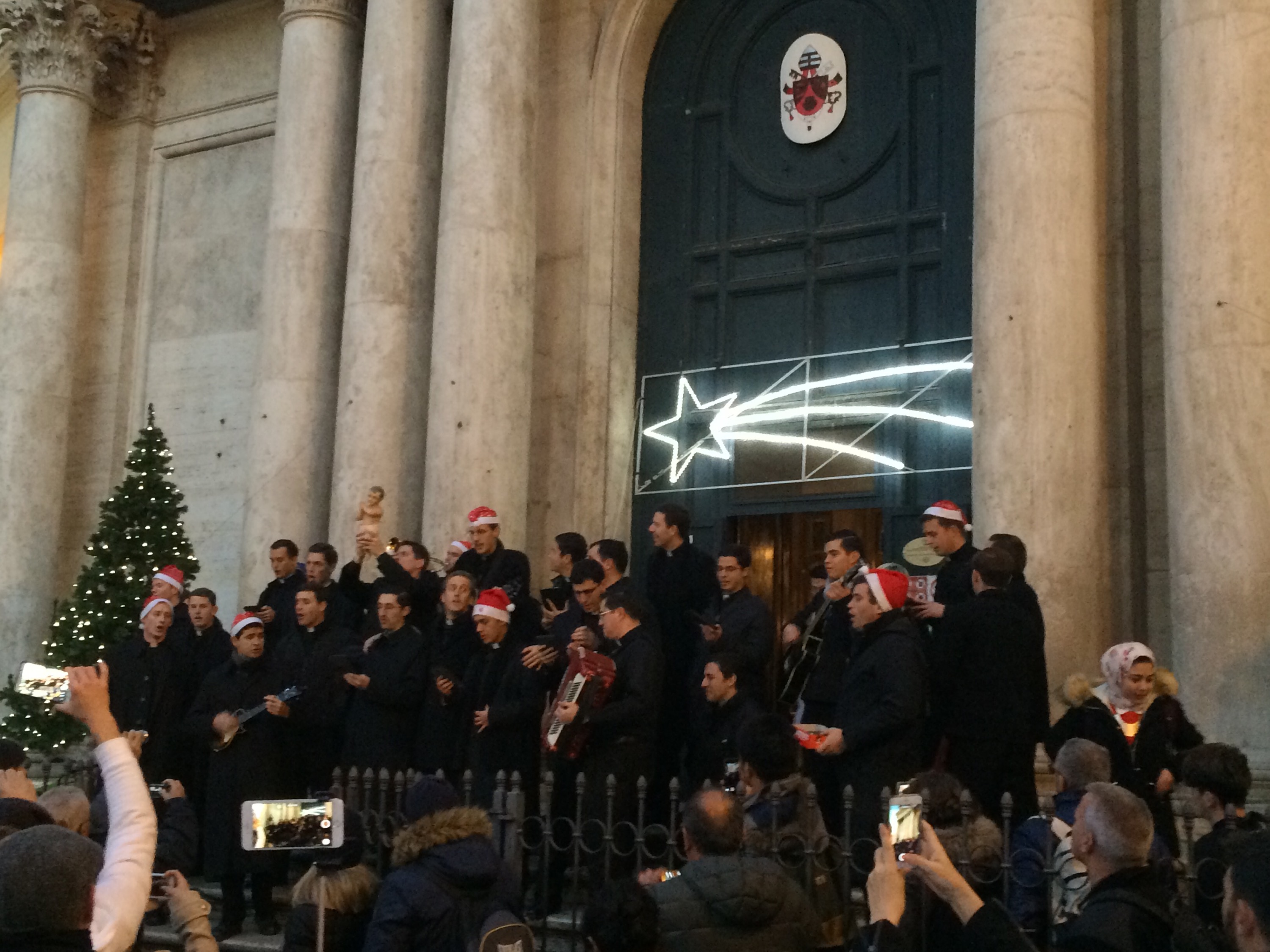
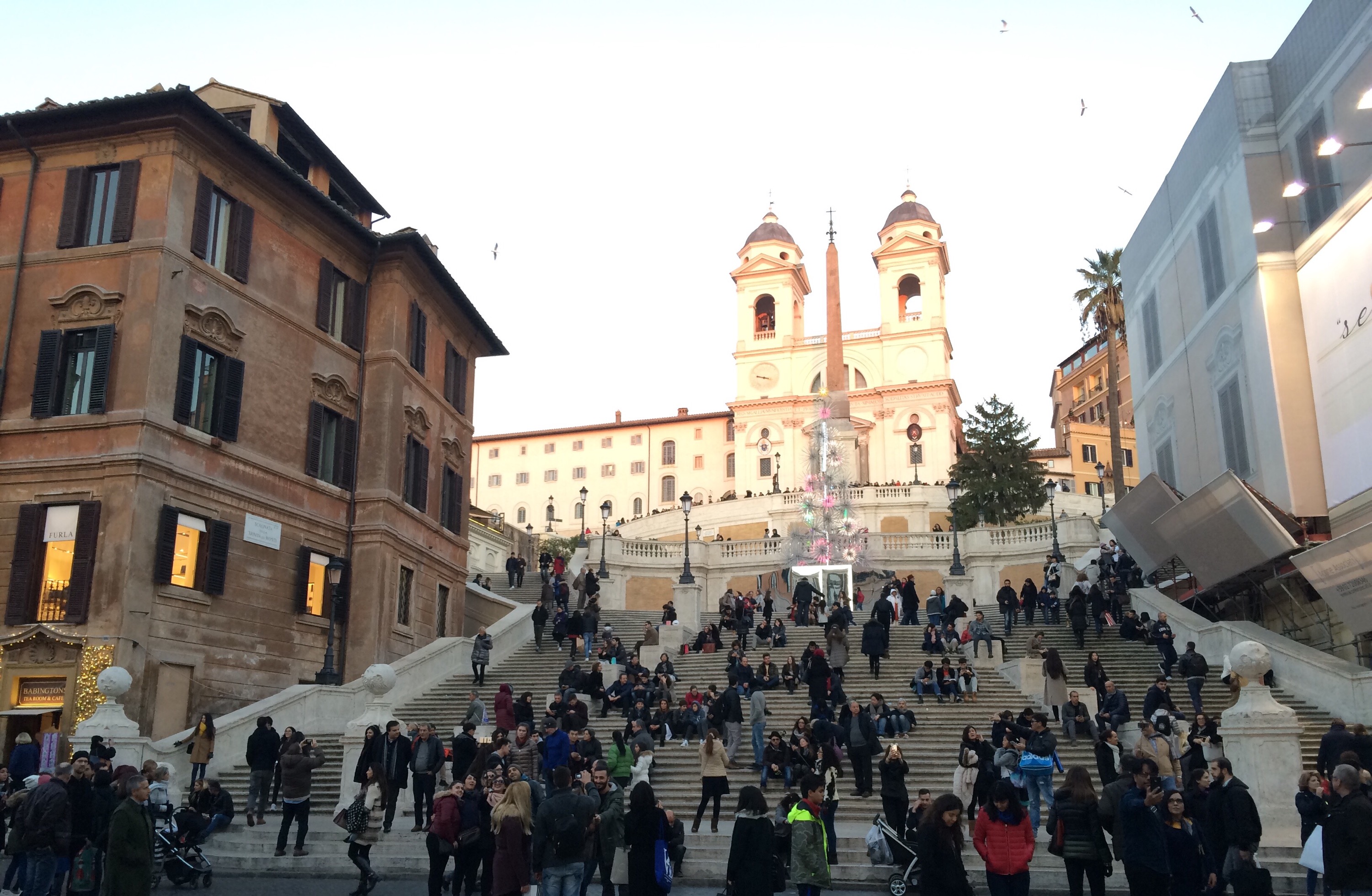
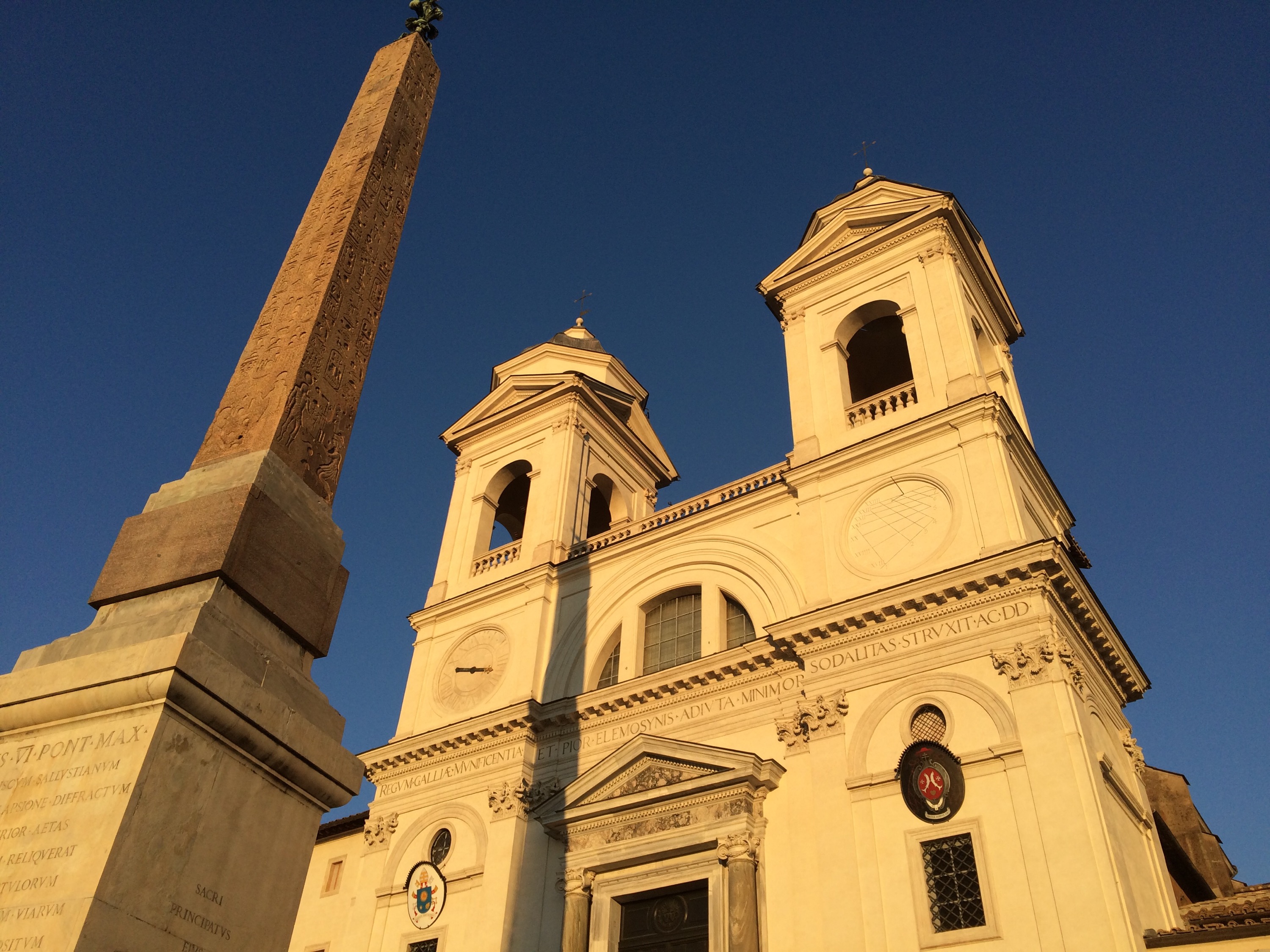
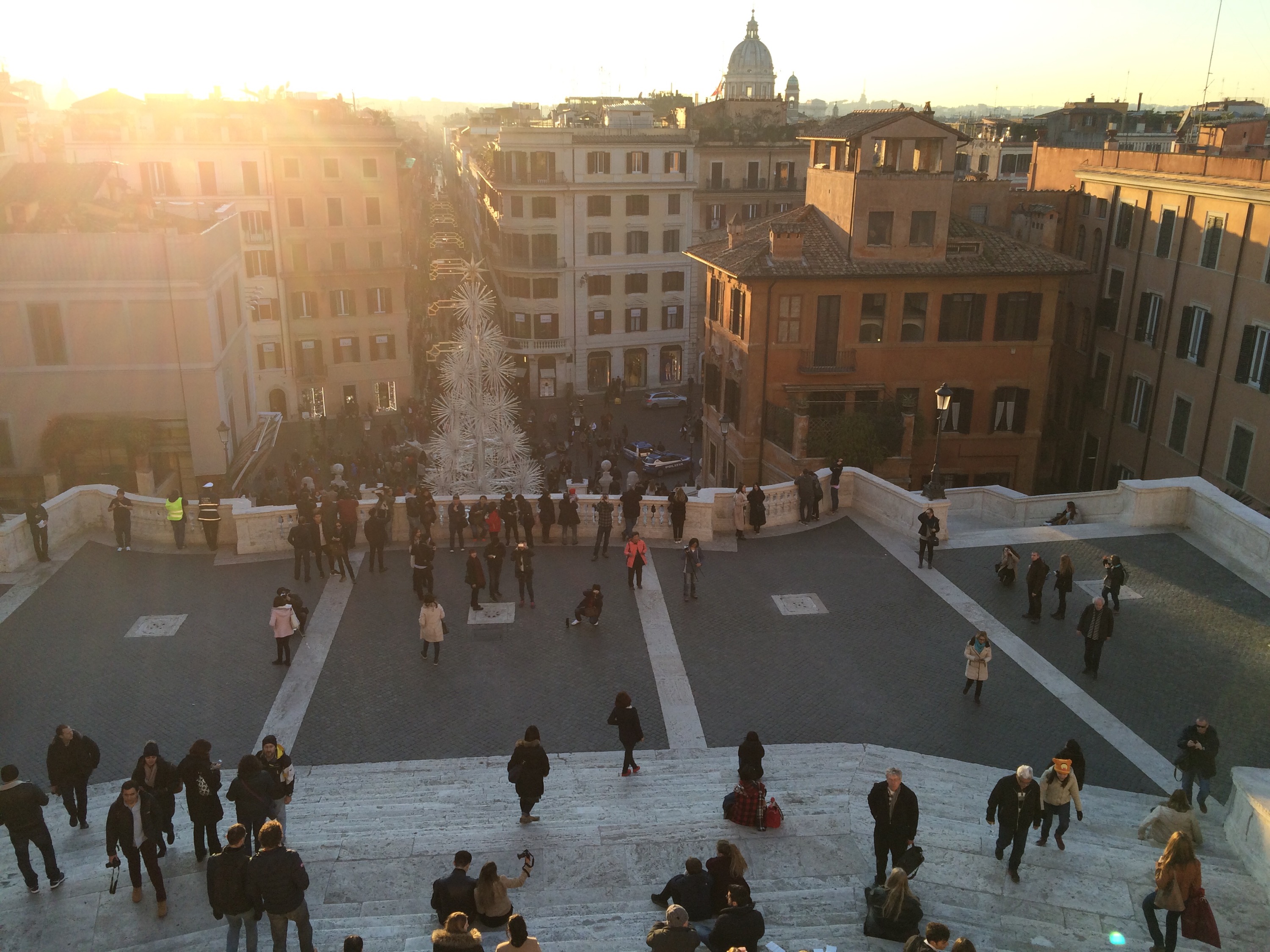
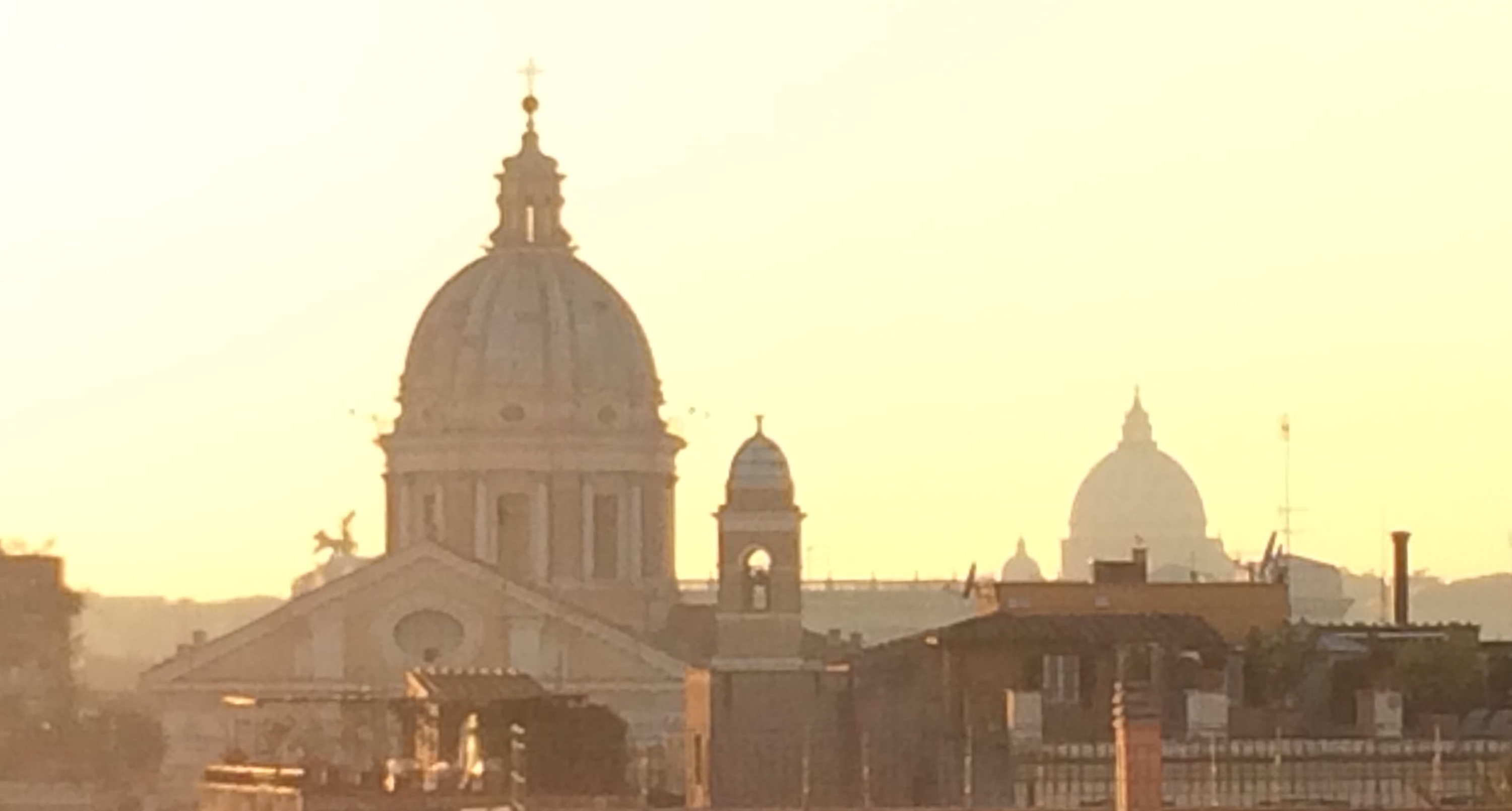
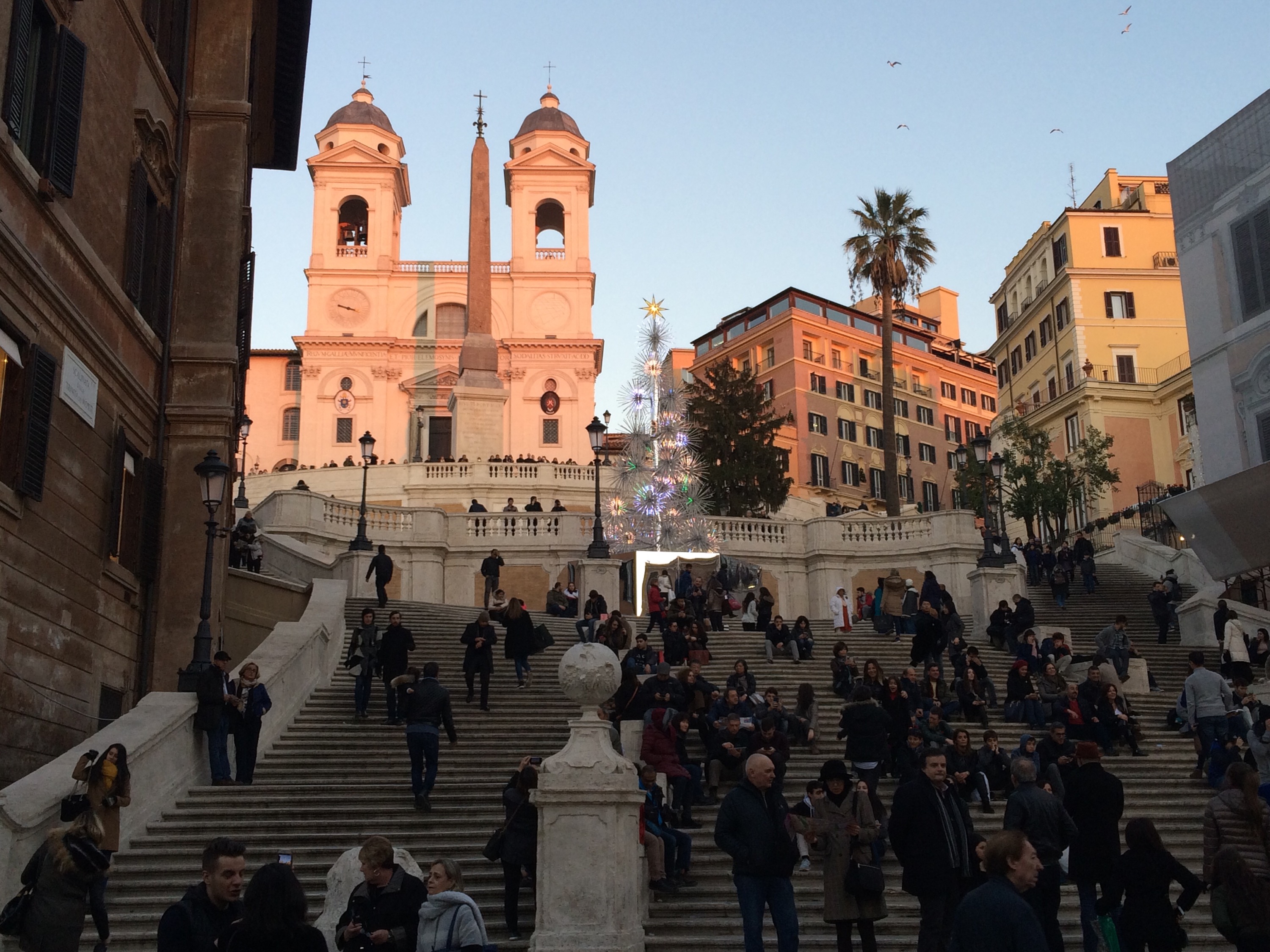
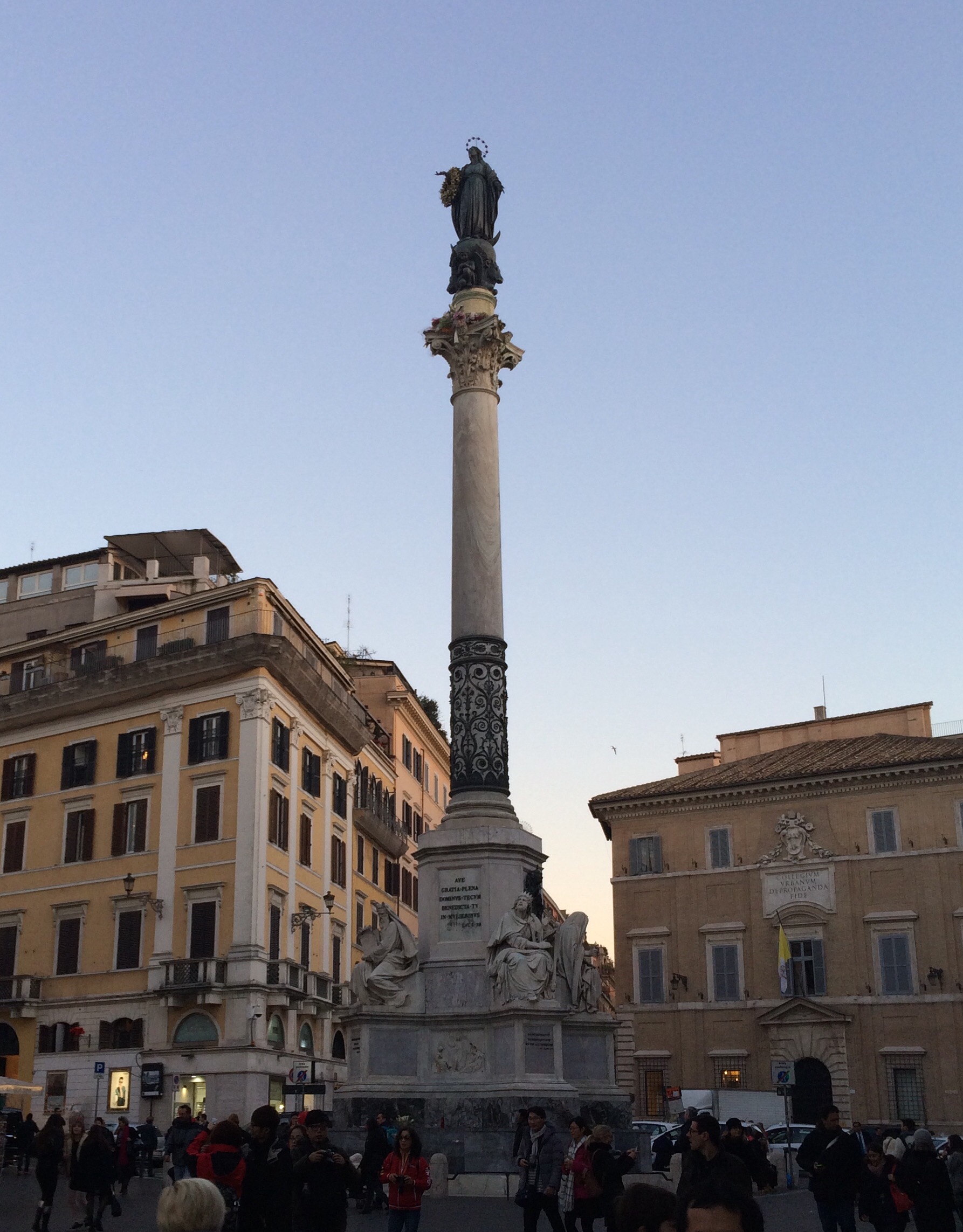



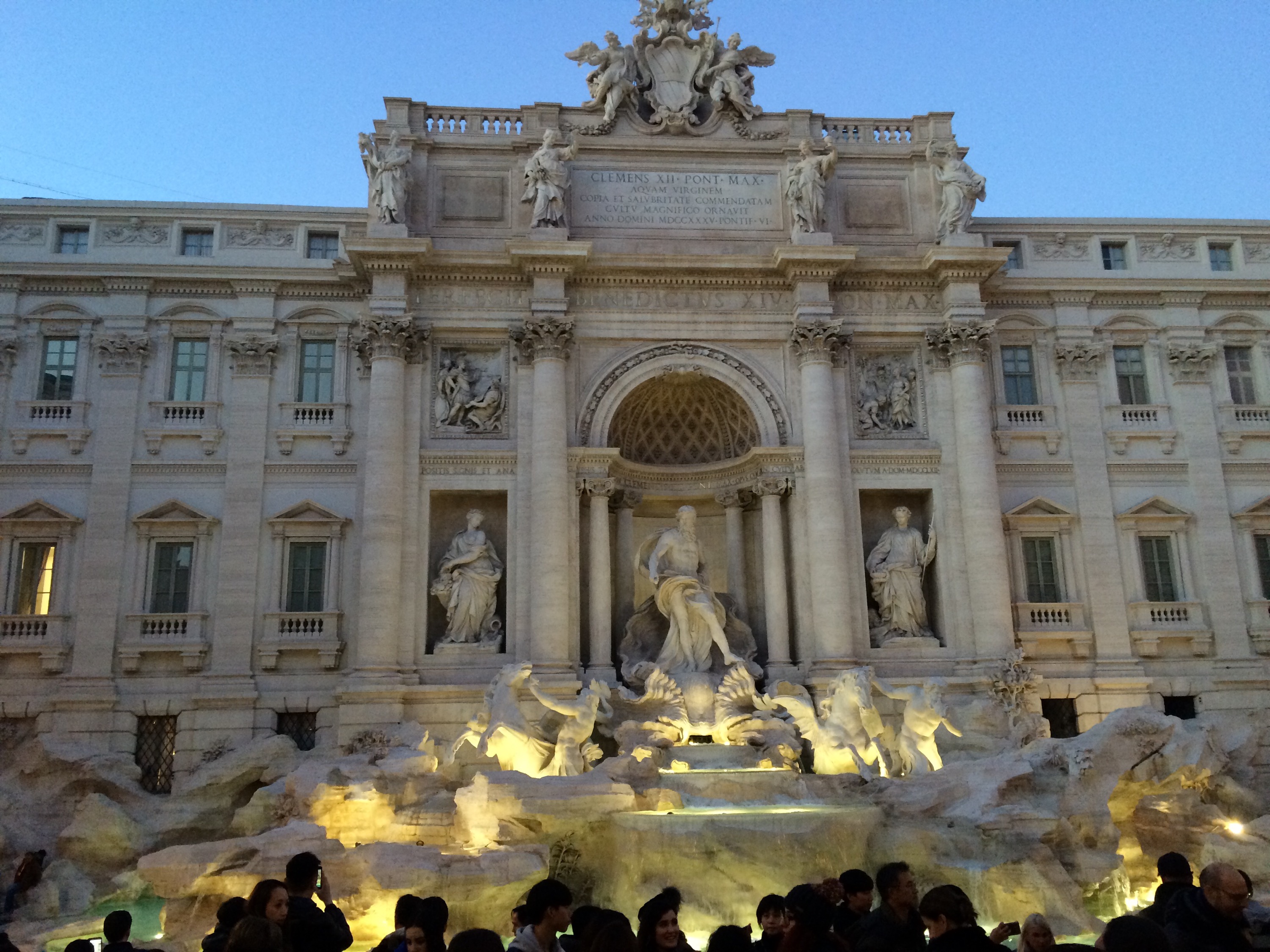
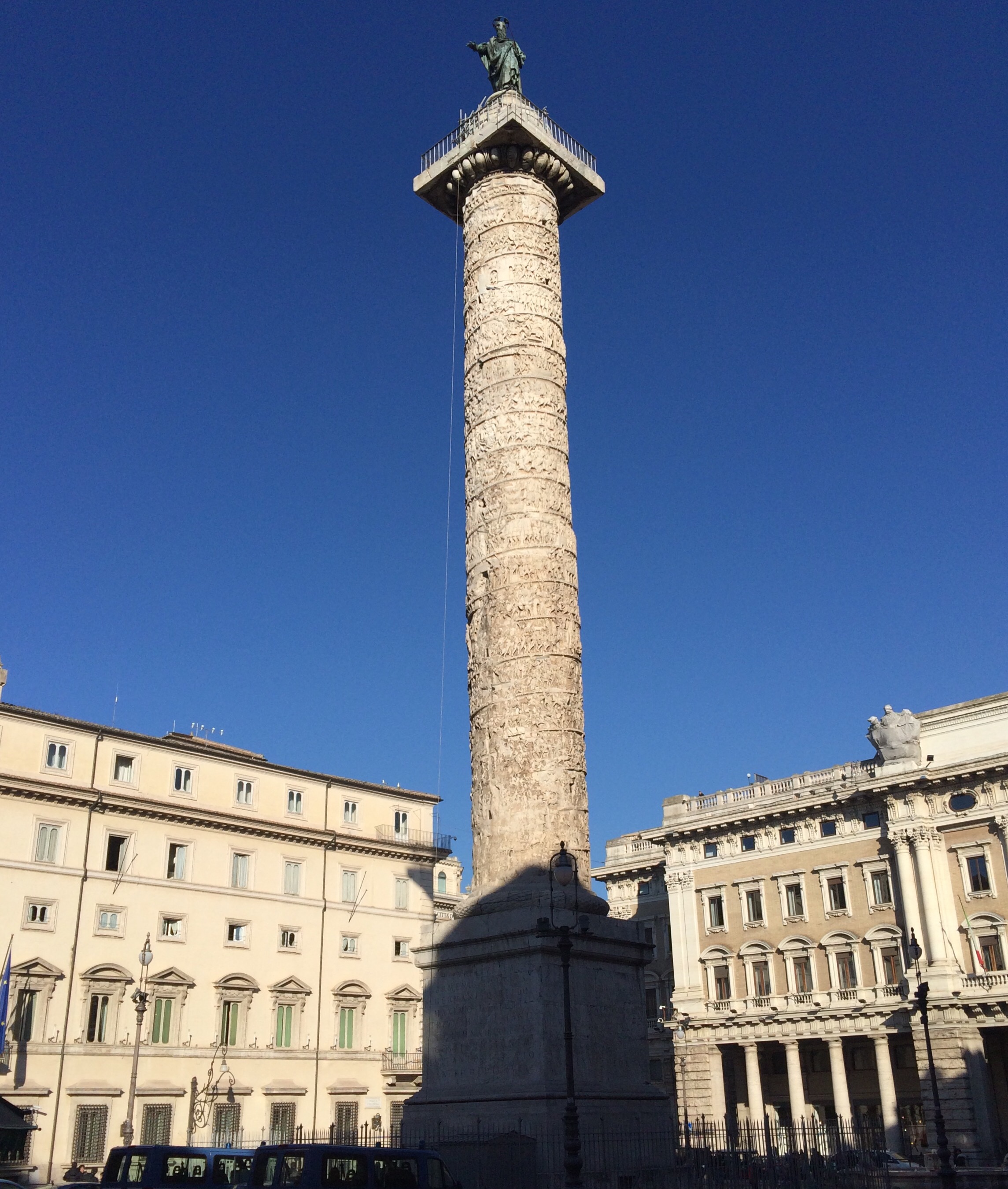
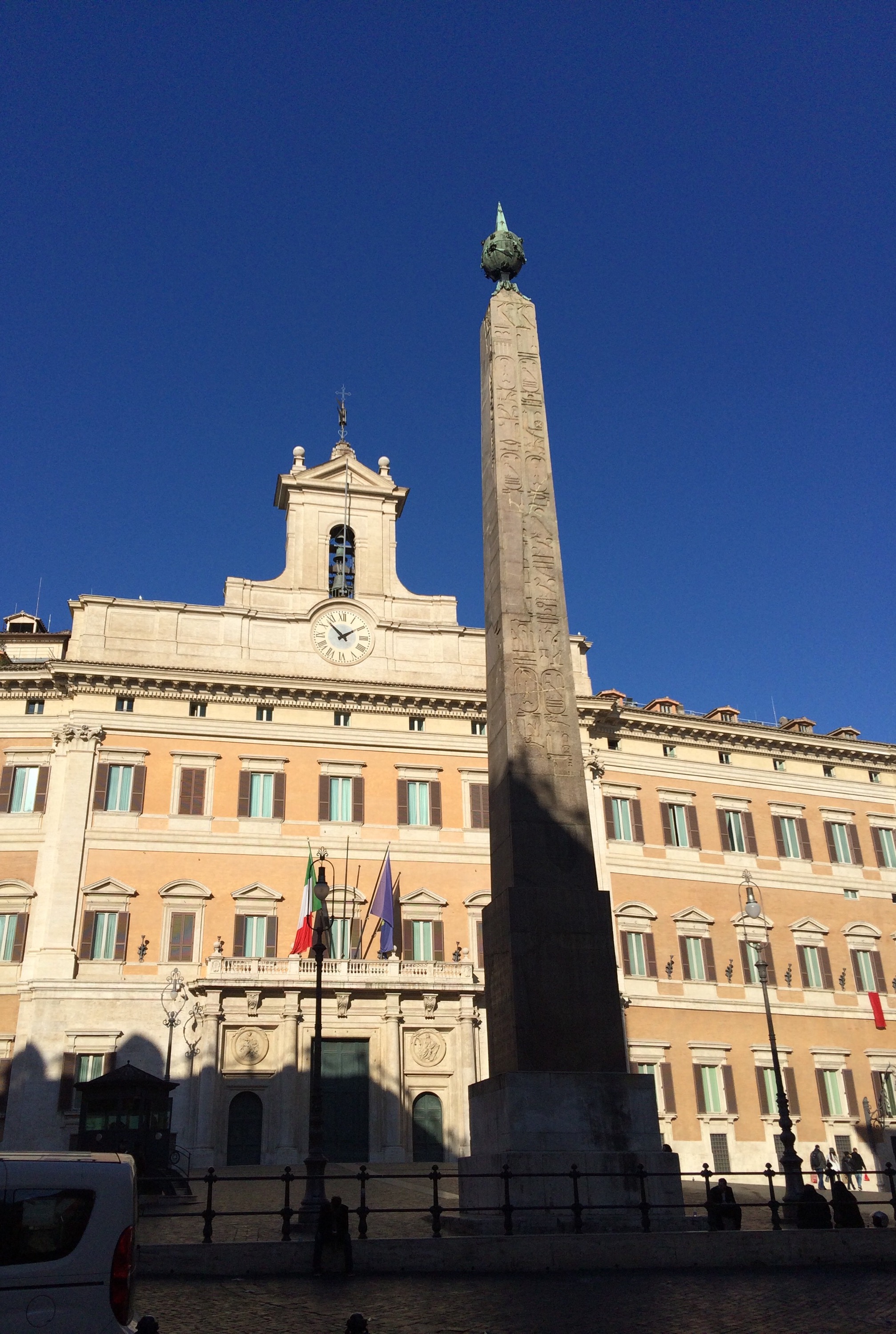
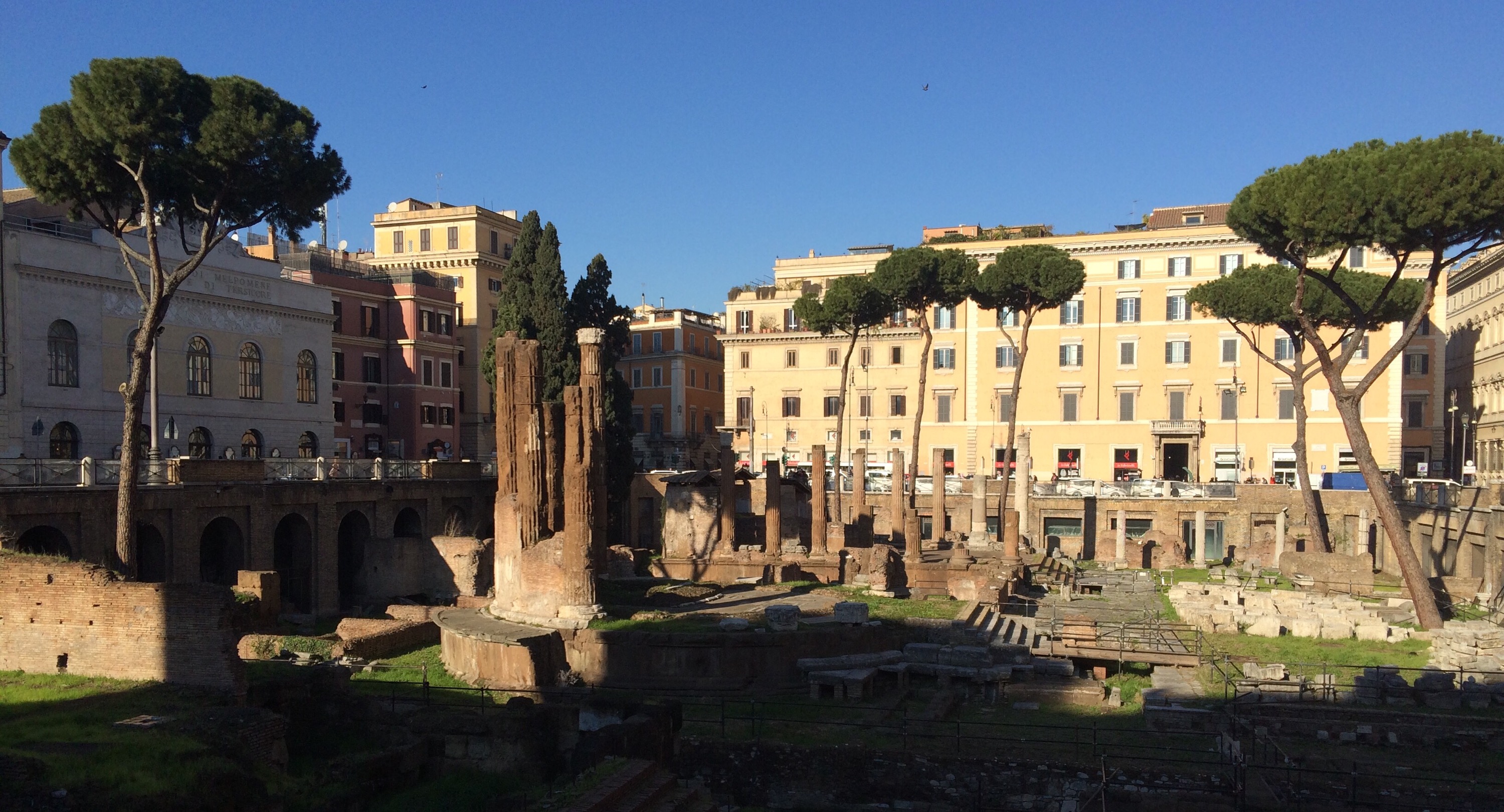
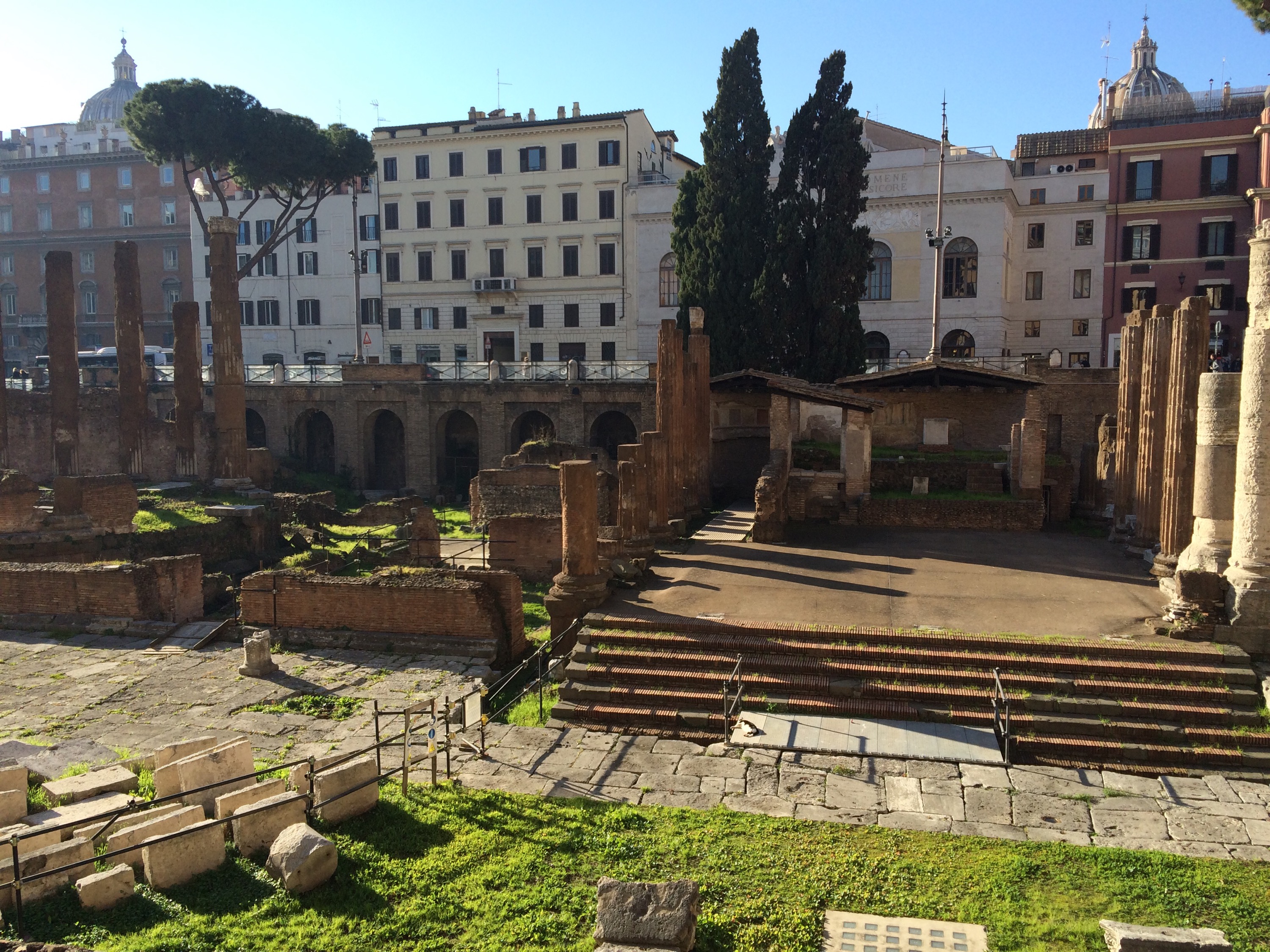




 The damned exiled to Hell in the bottom right corner echoes the horrors of
The damned exiled to Hell in the bottom right corner echoes the horrors of  Although that might be because a mere week ago I stumbled on the hiding-in-plain-sight
Although that might be because a mere week ago I stumbled on the hiding-in-plain-sight 